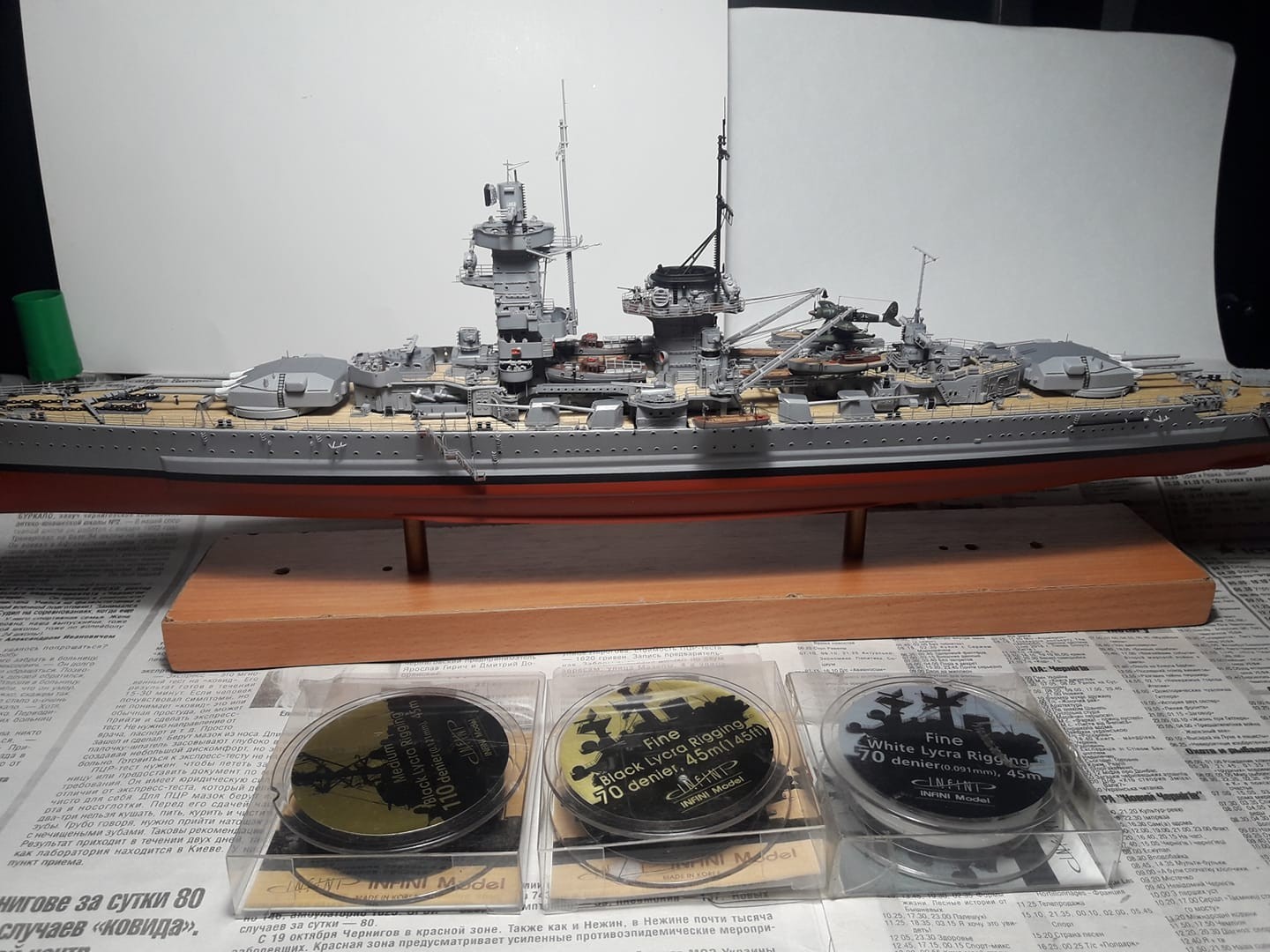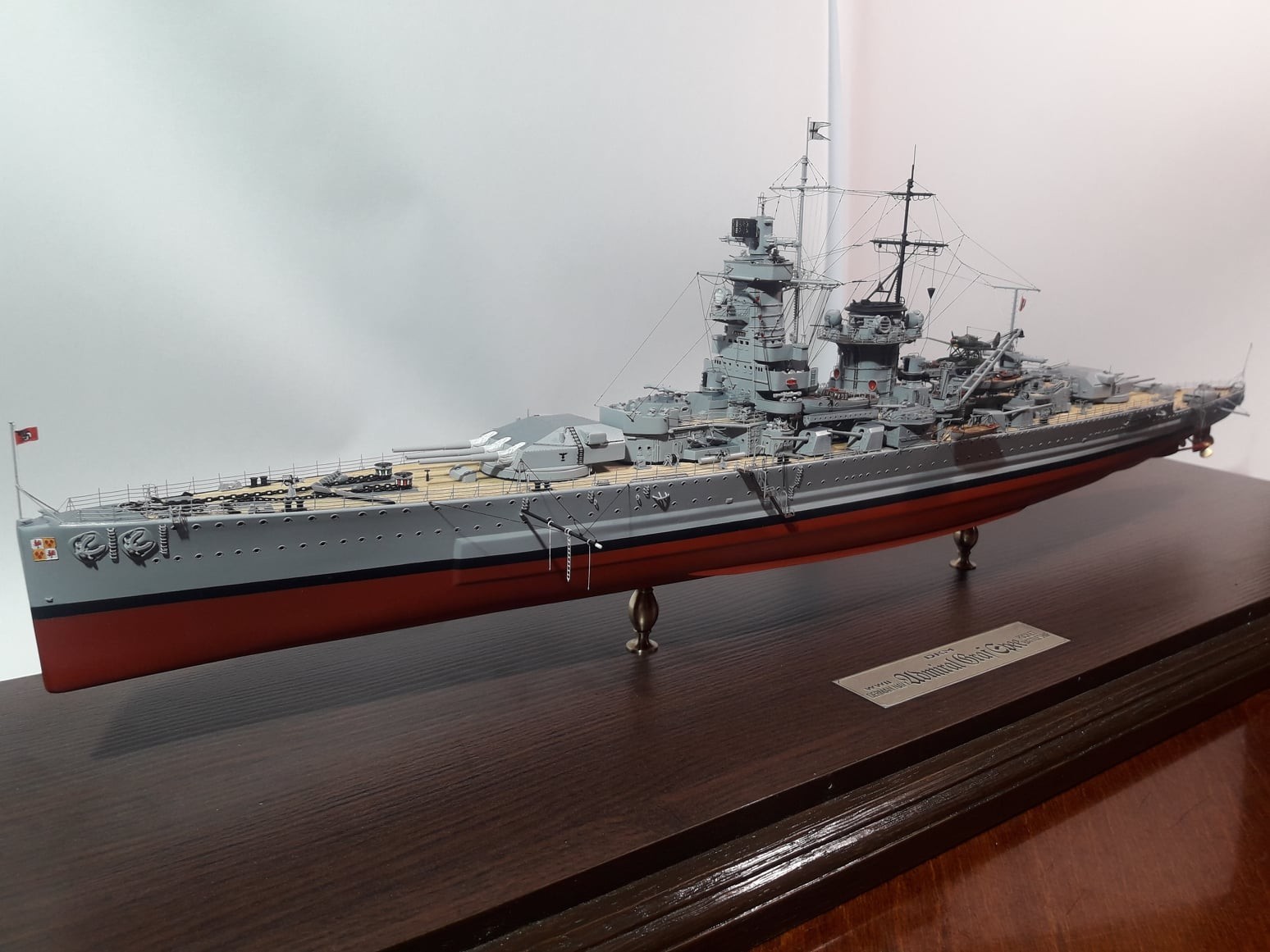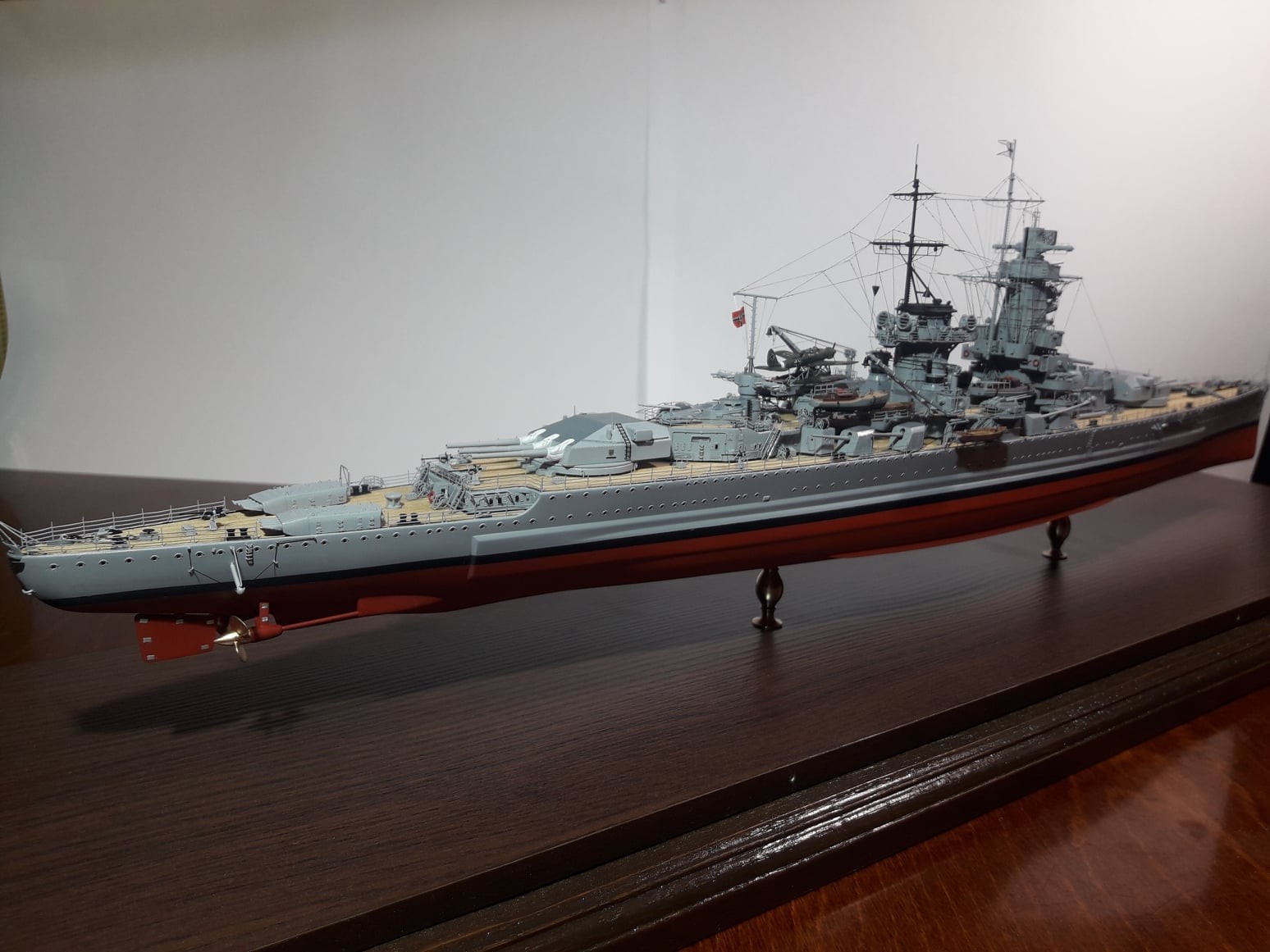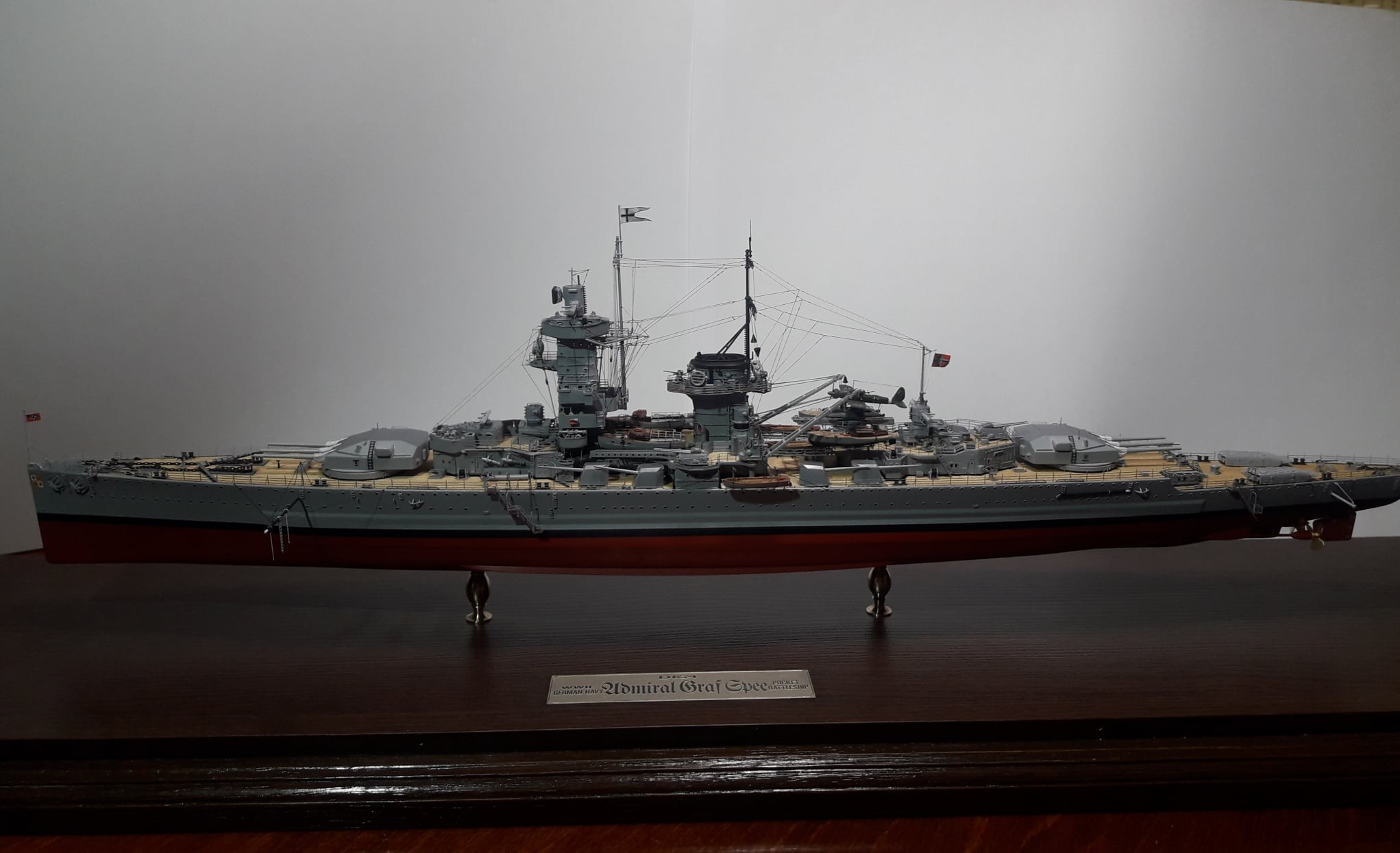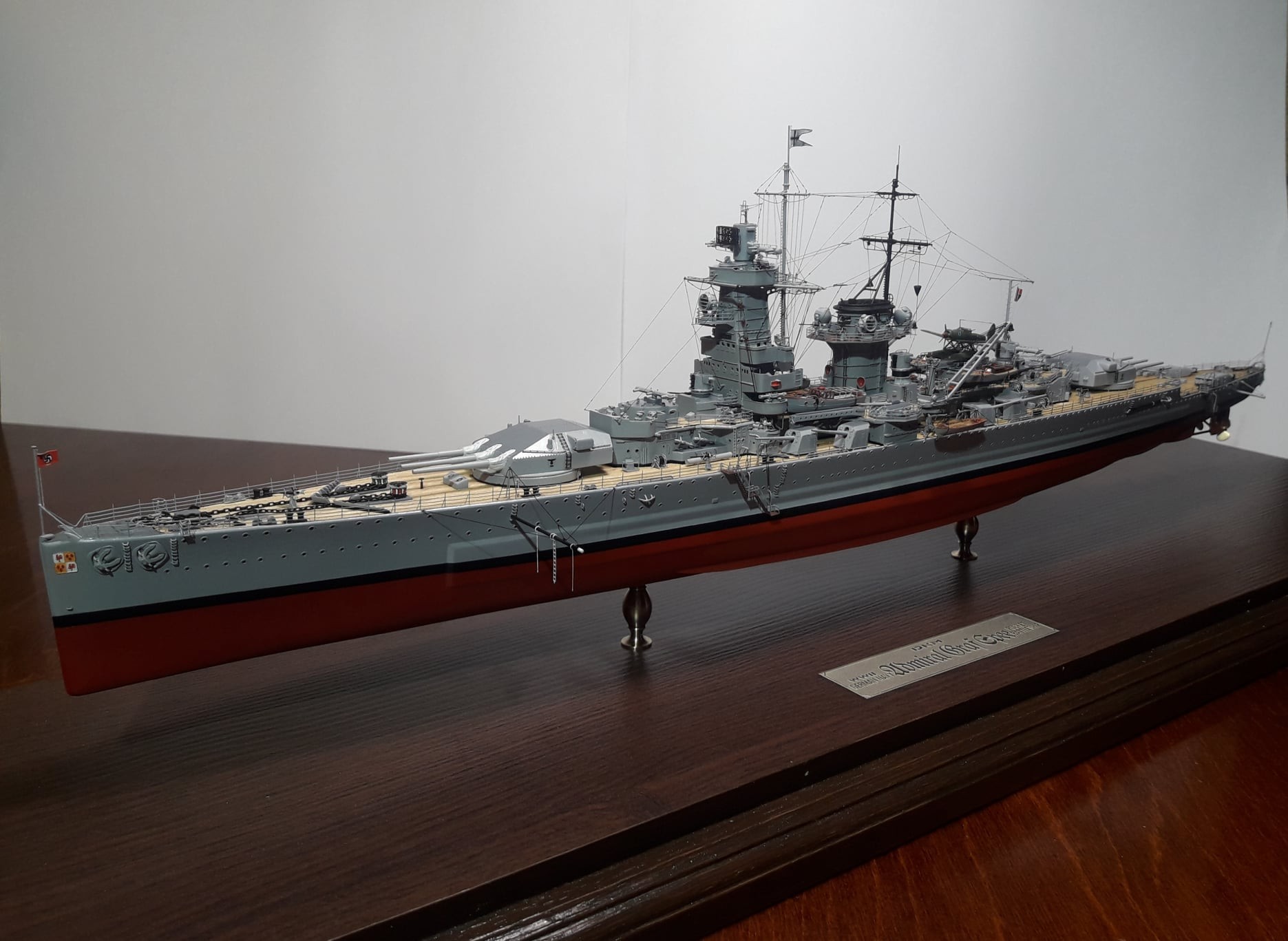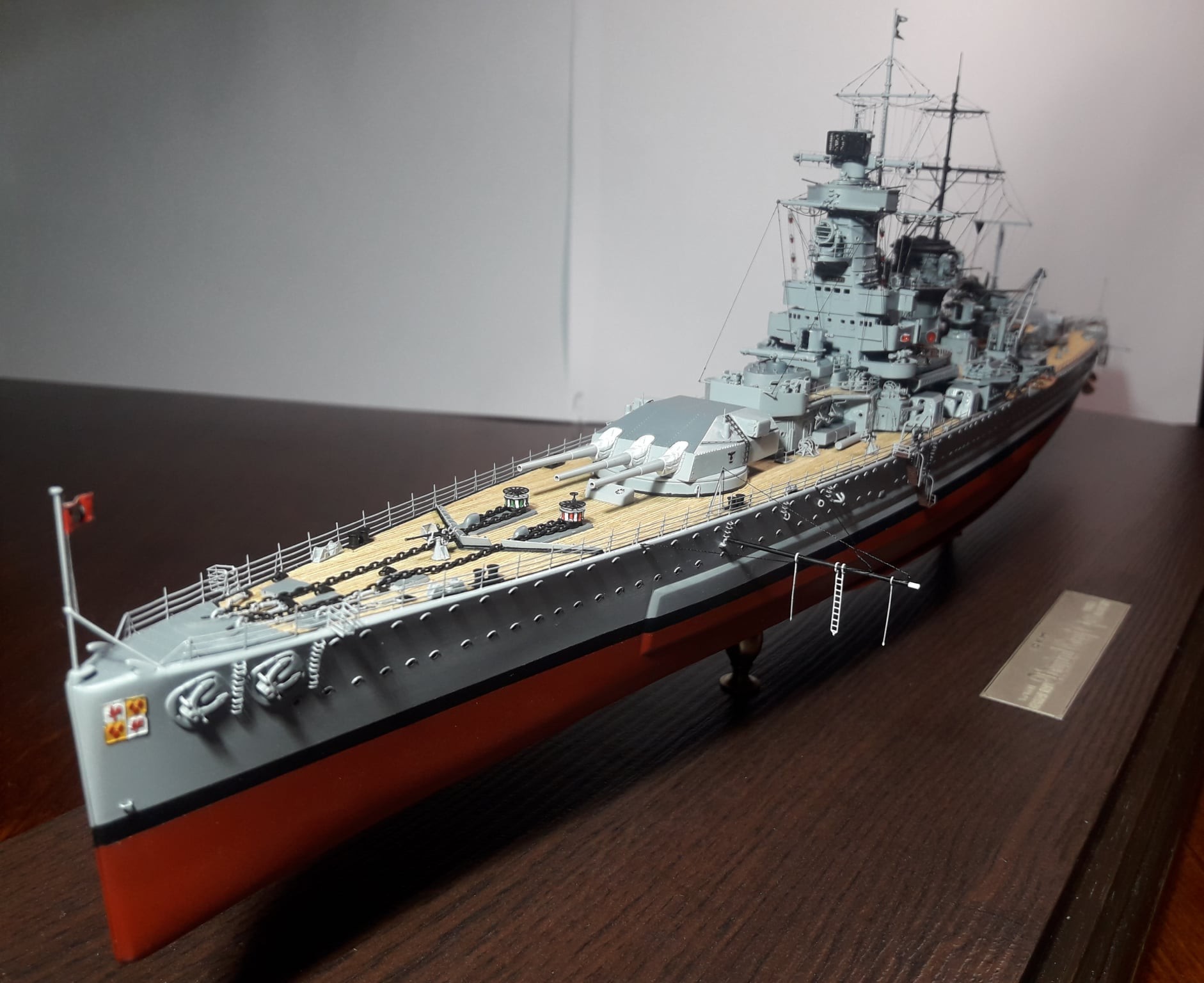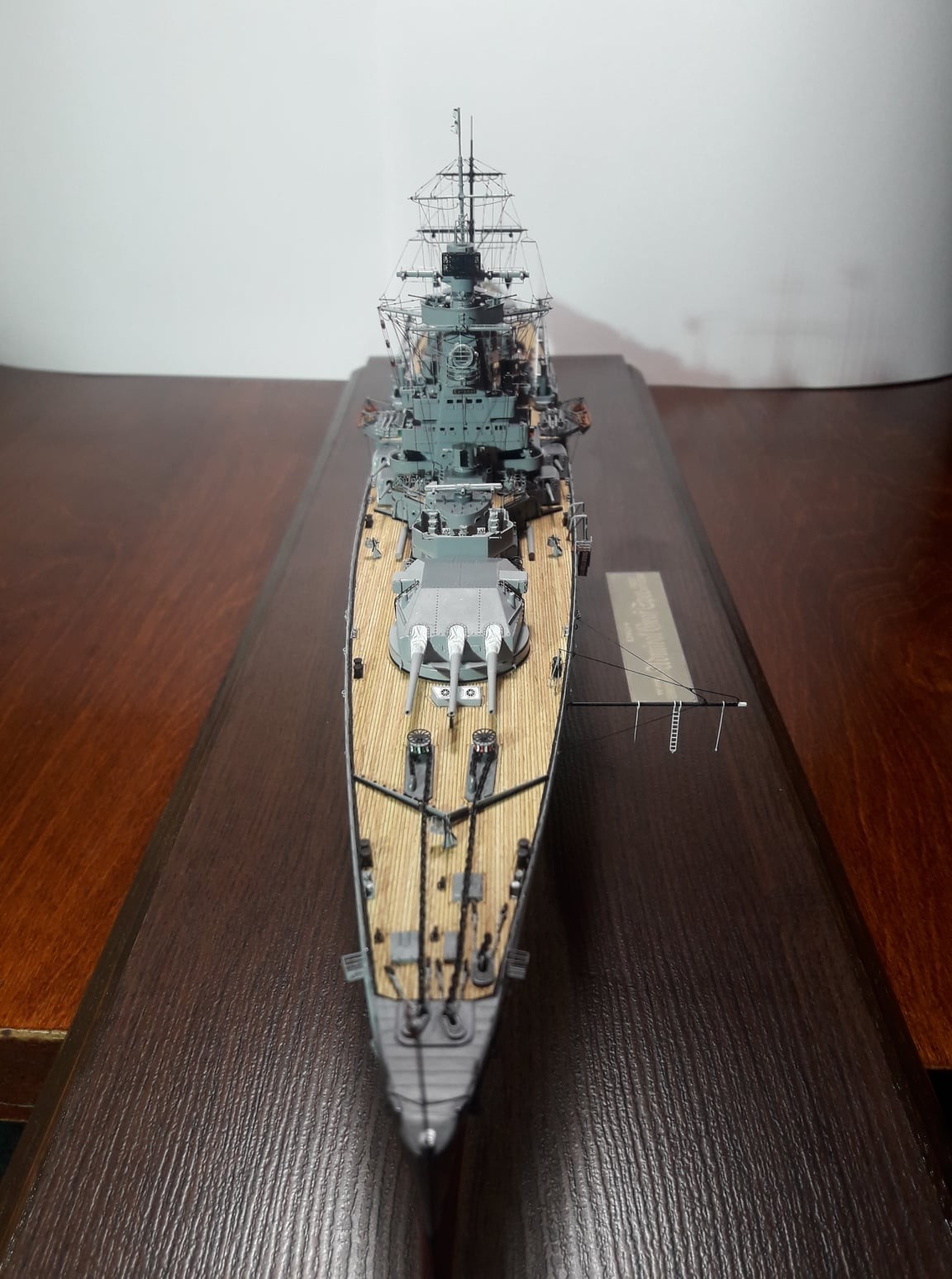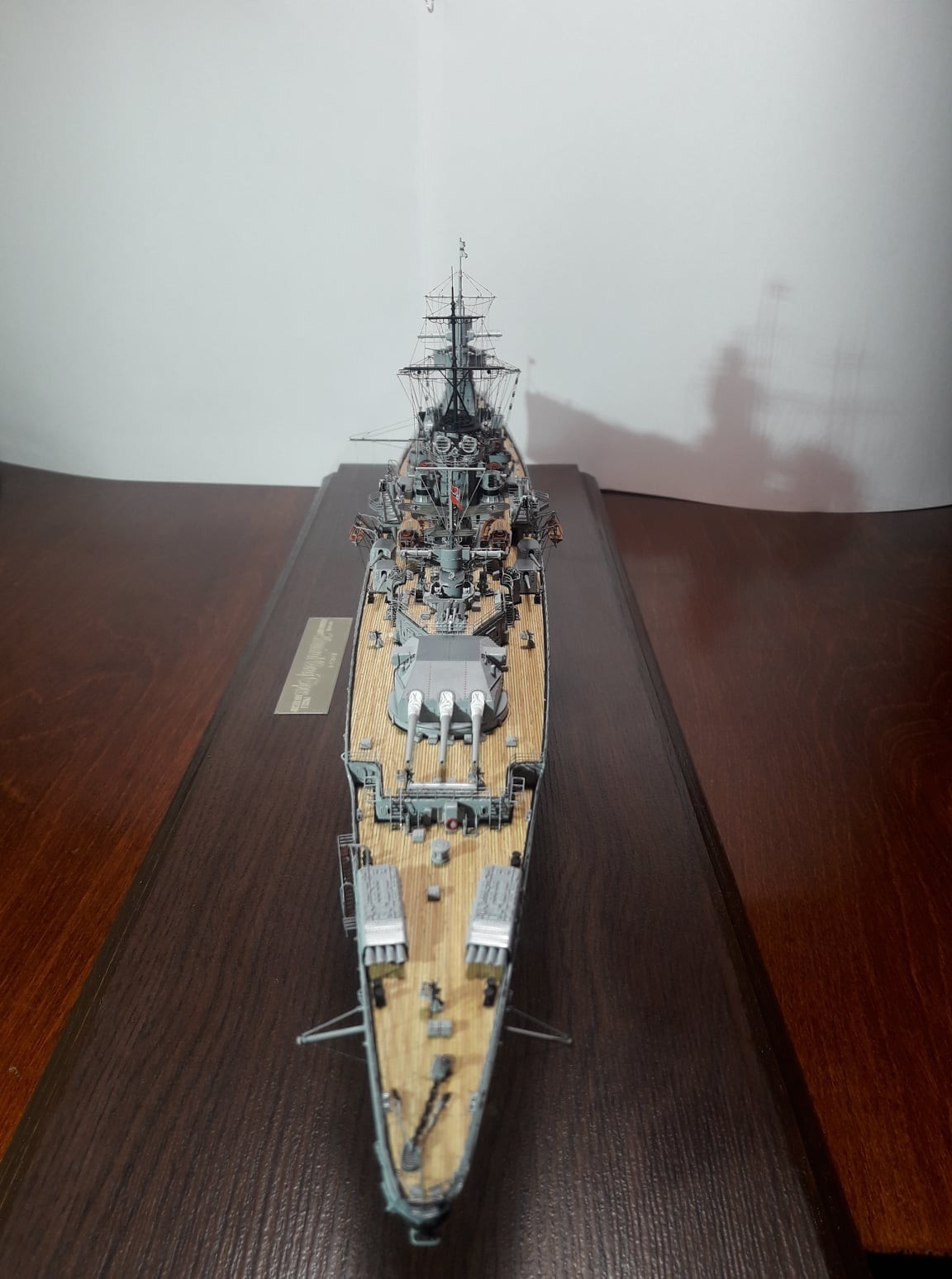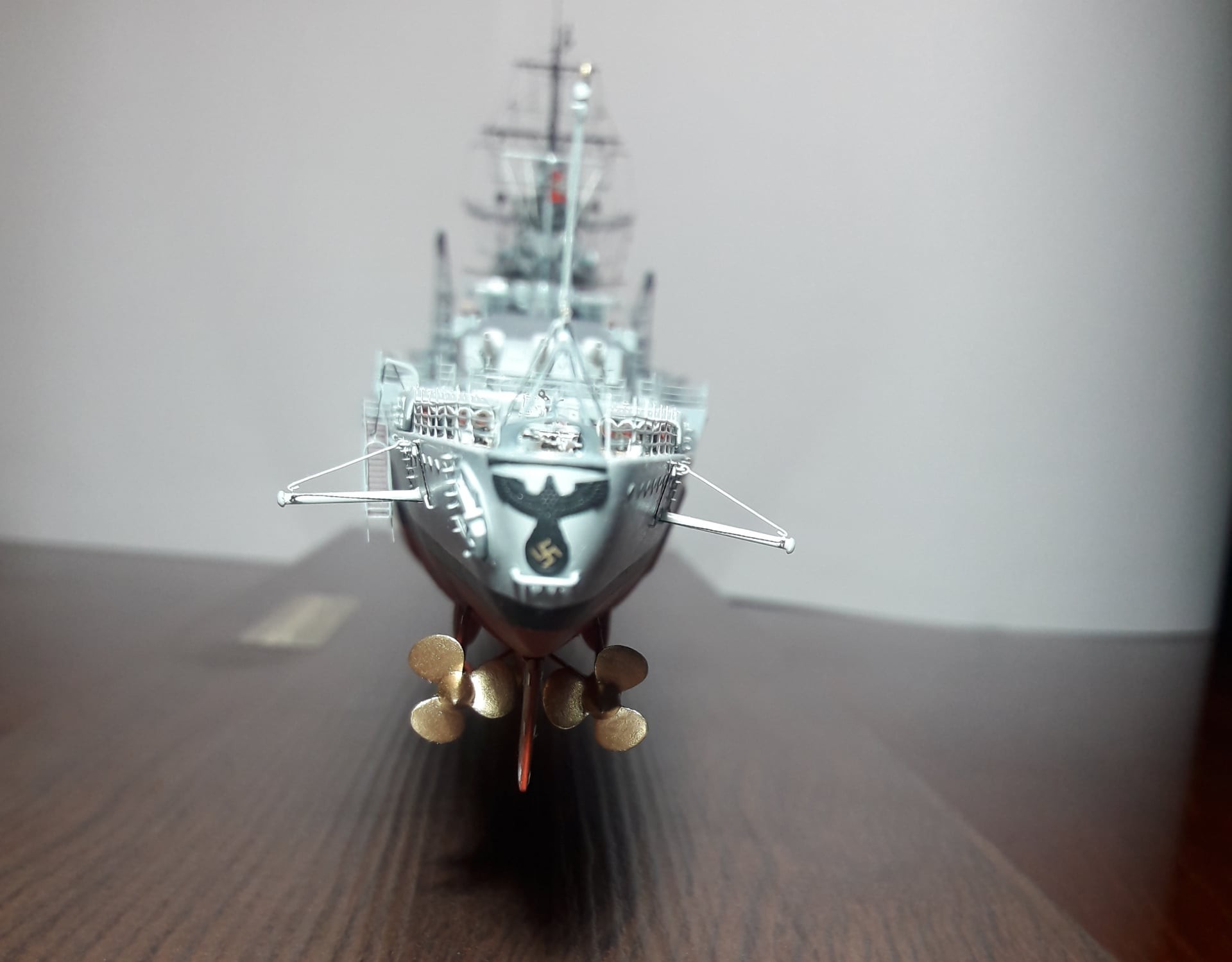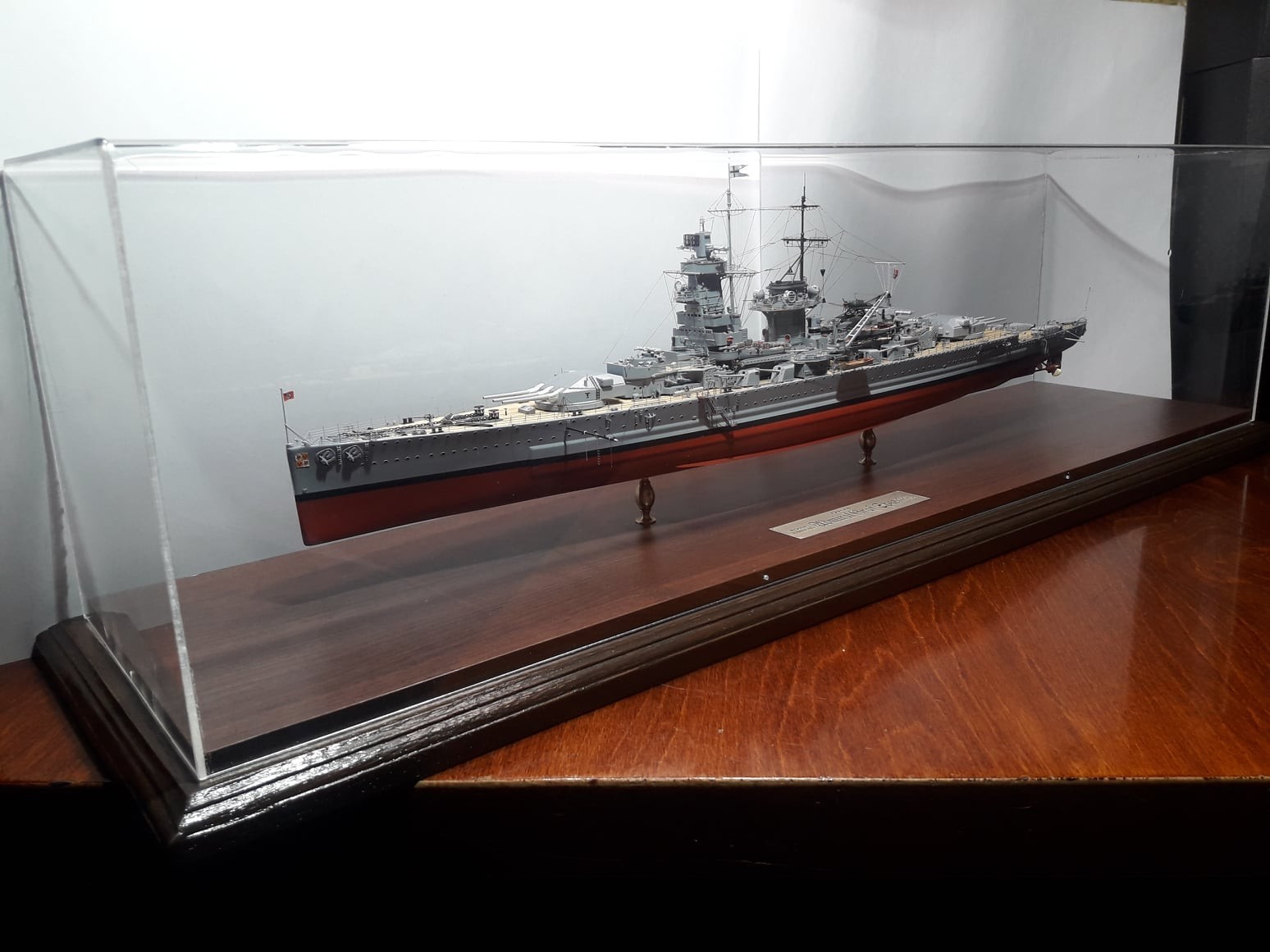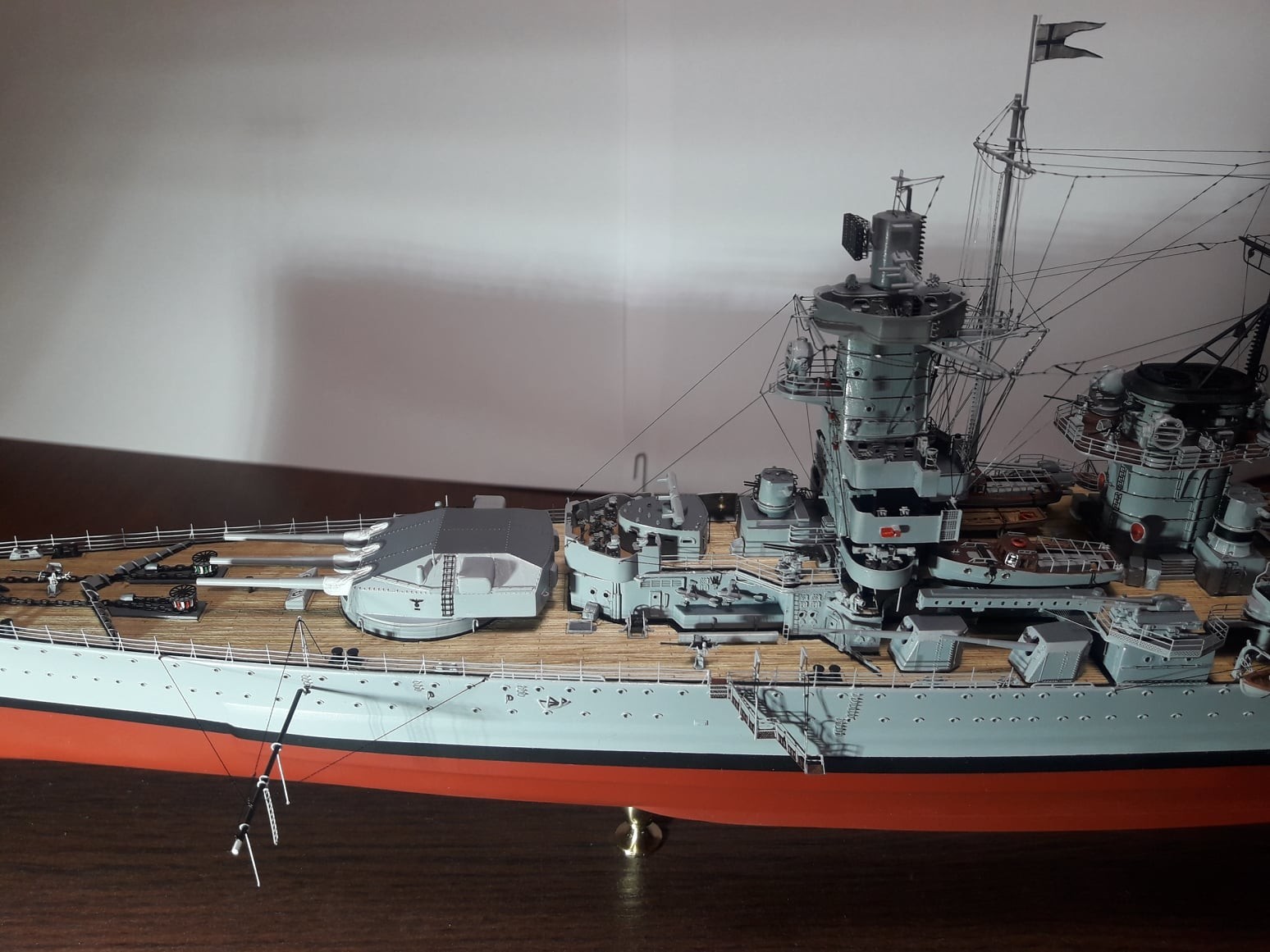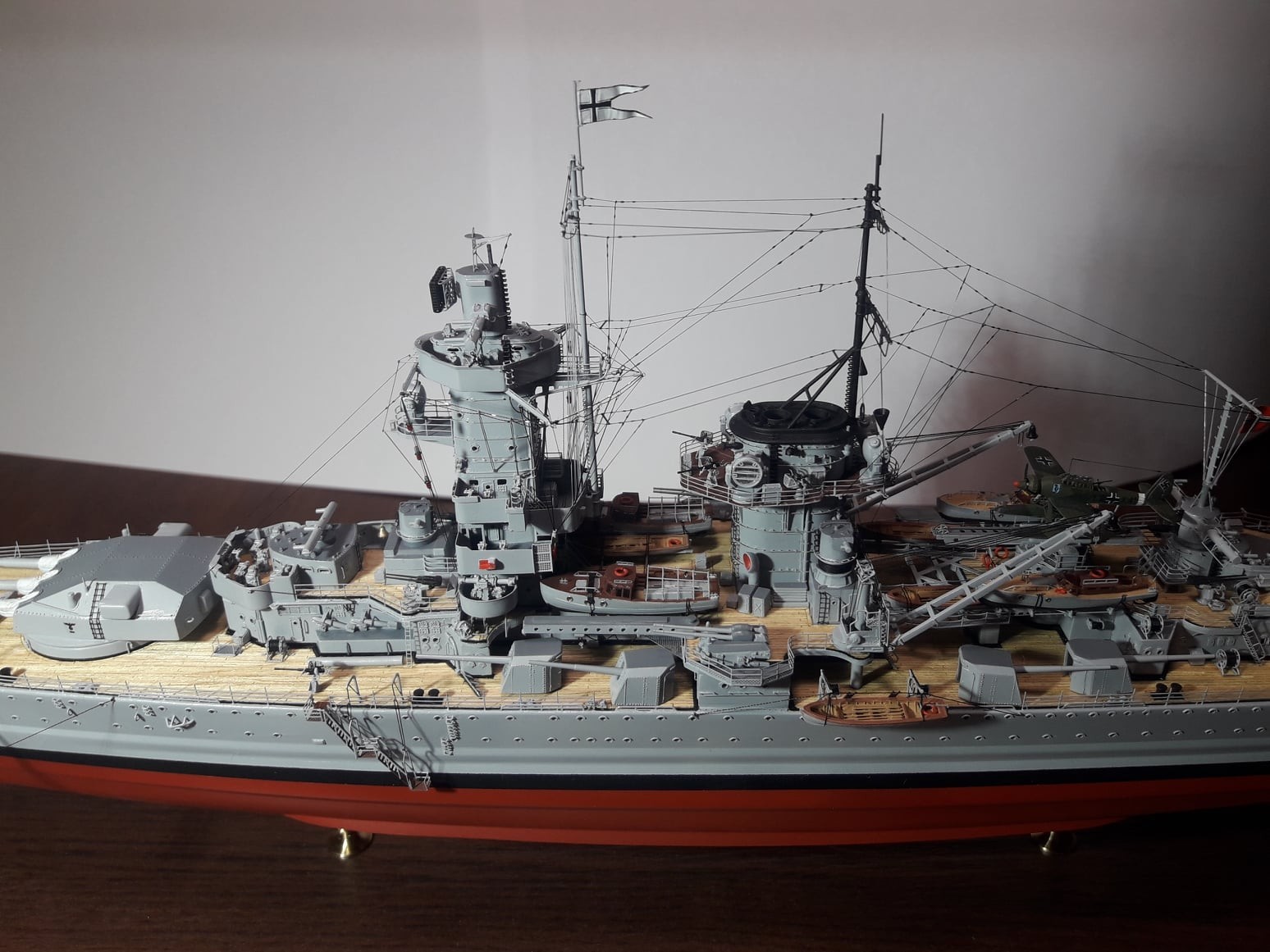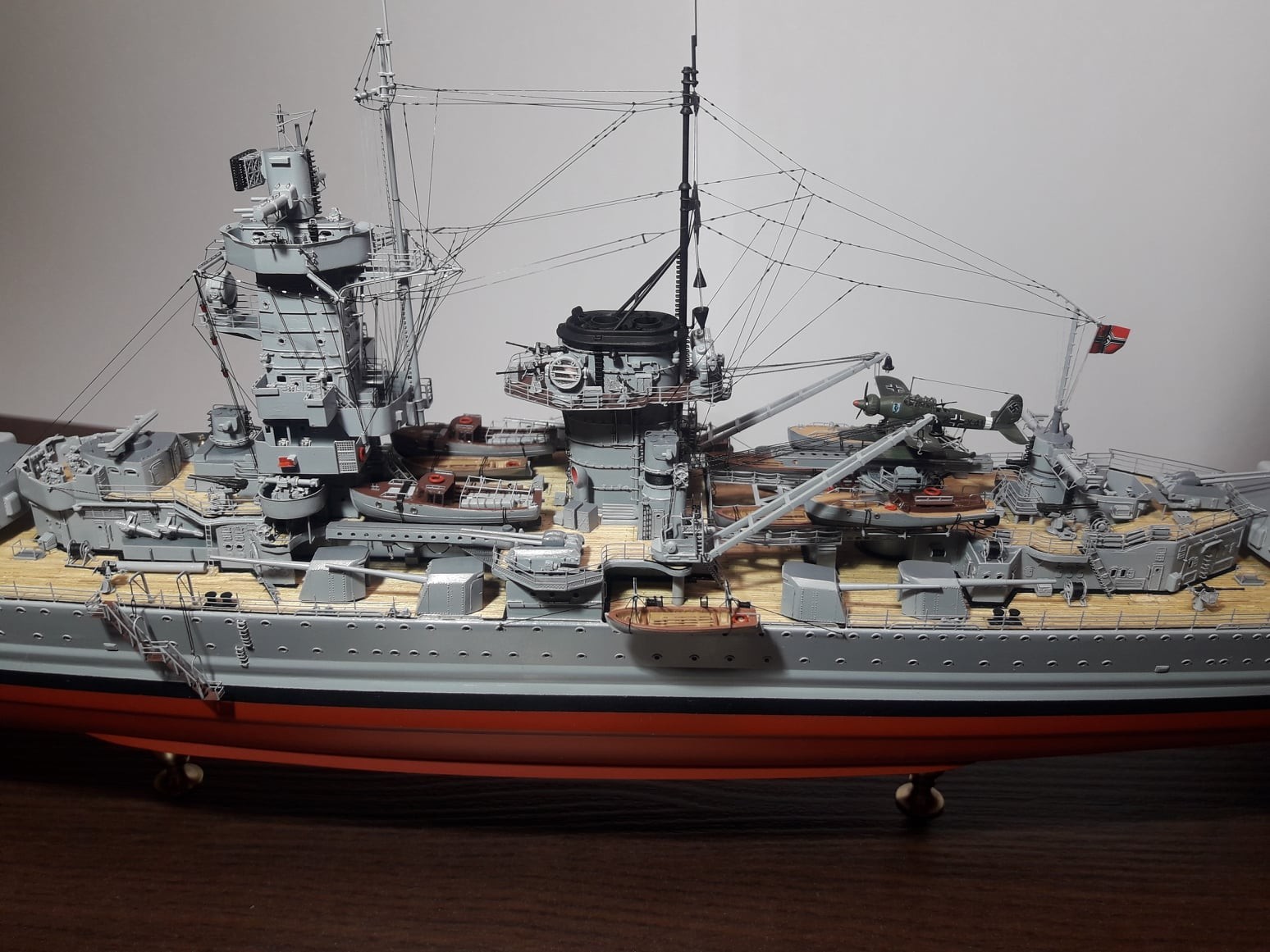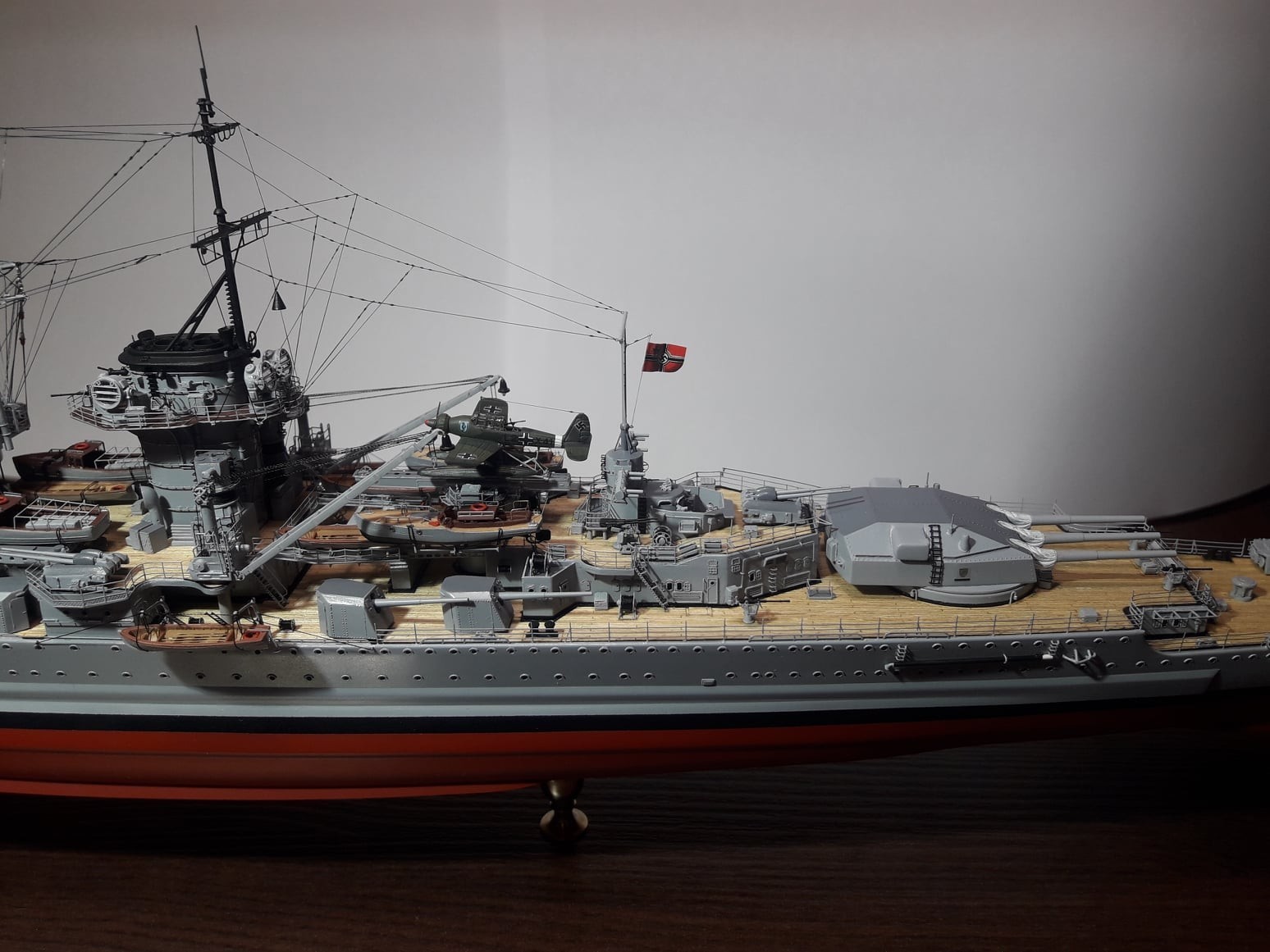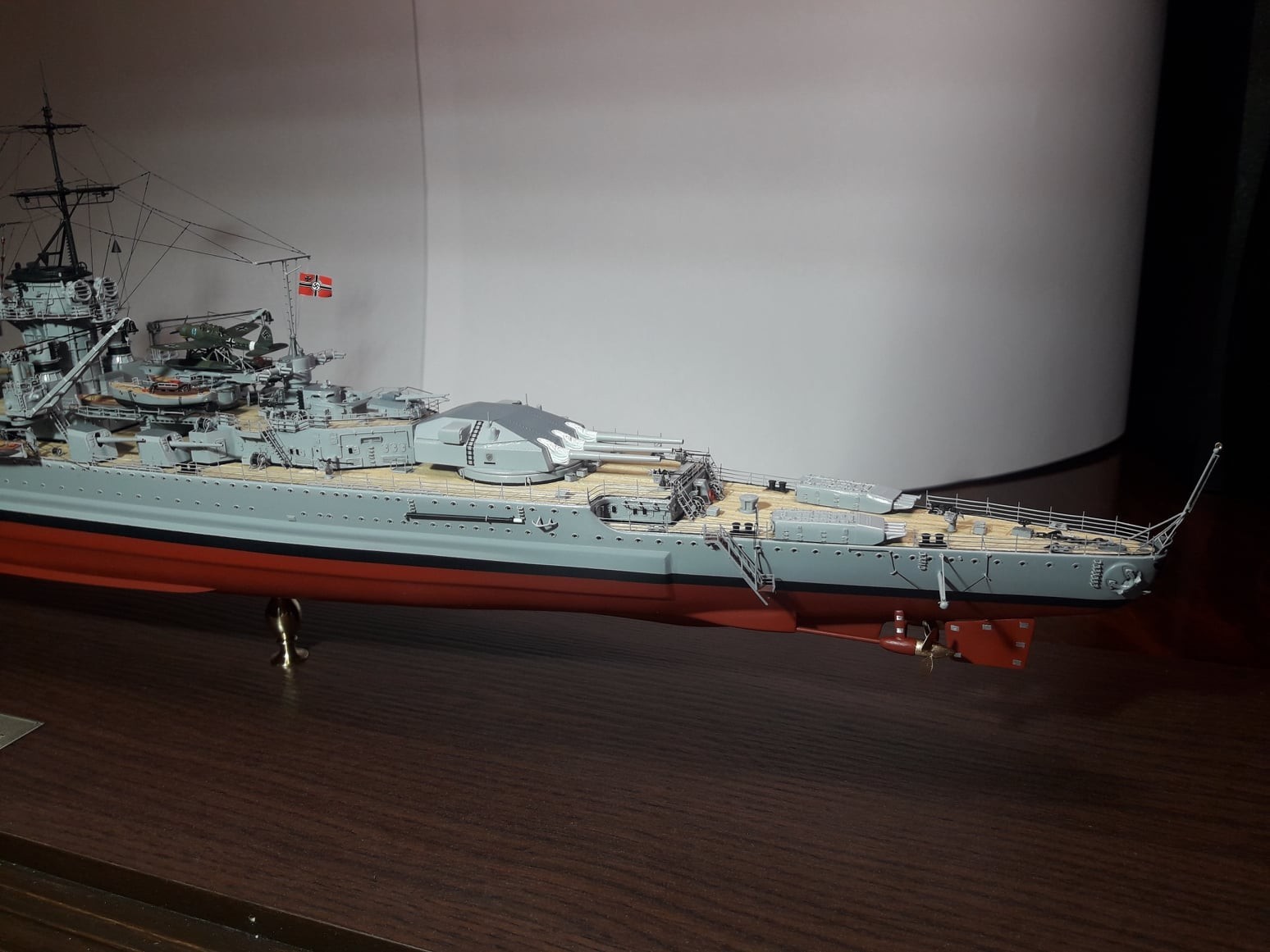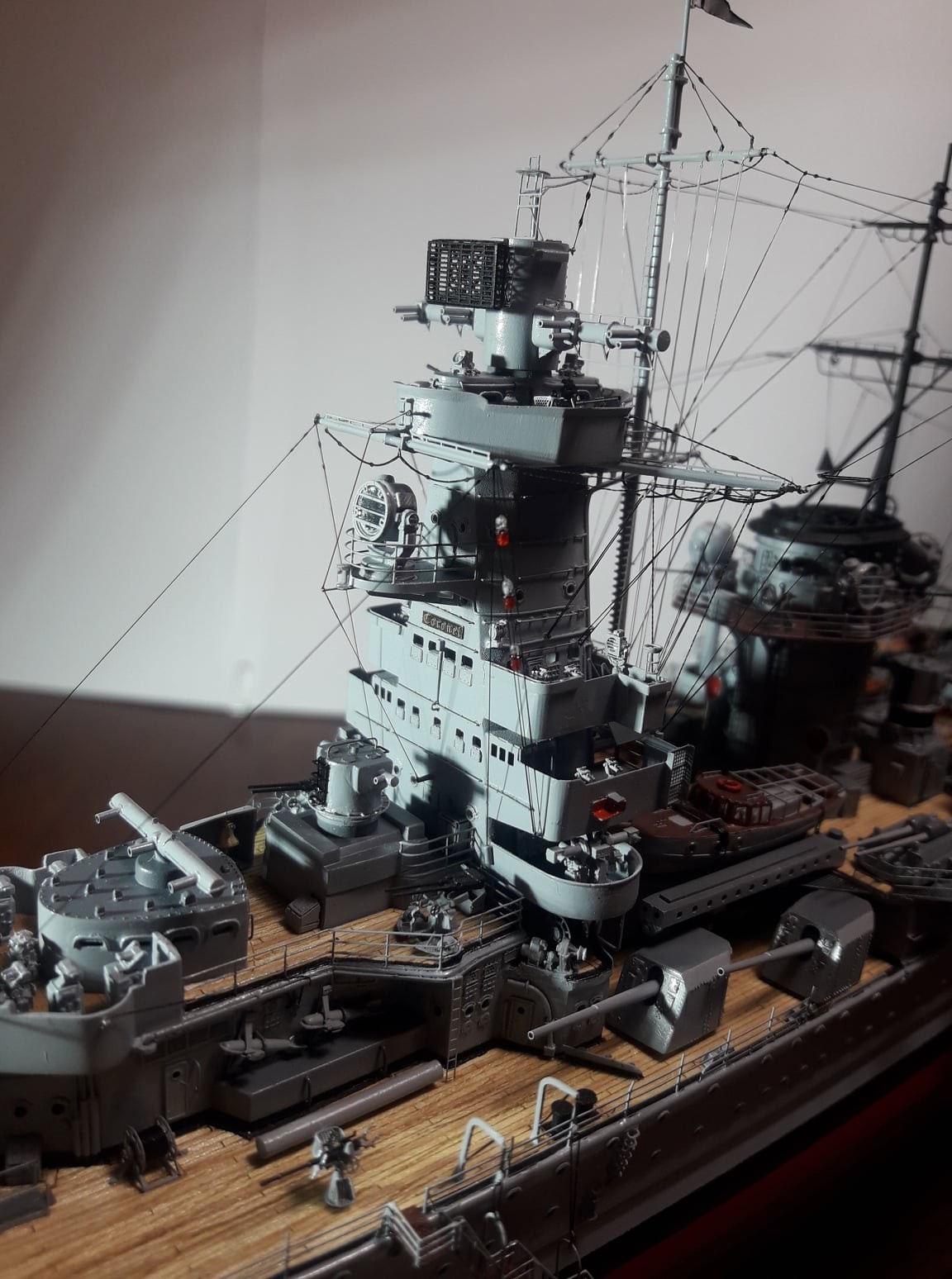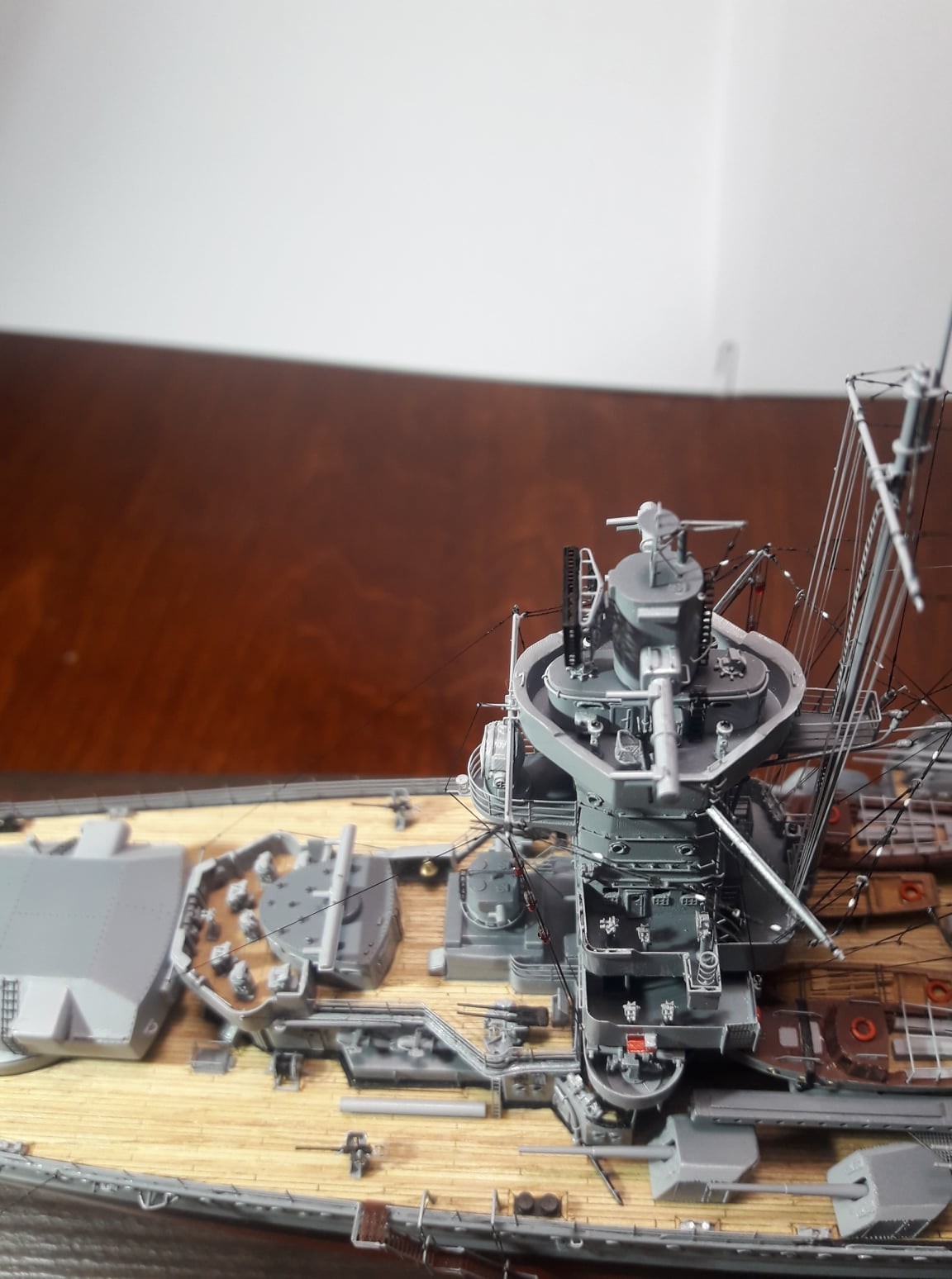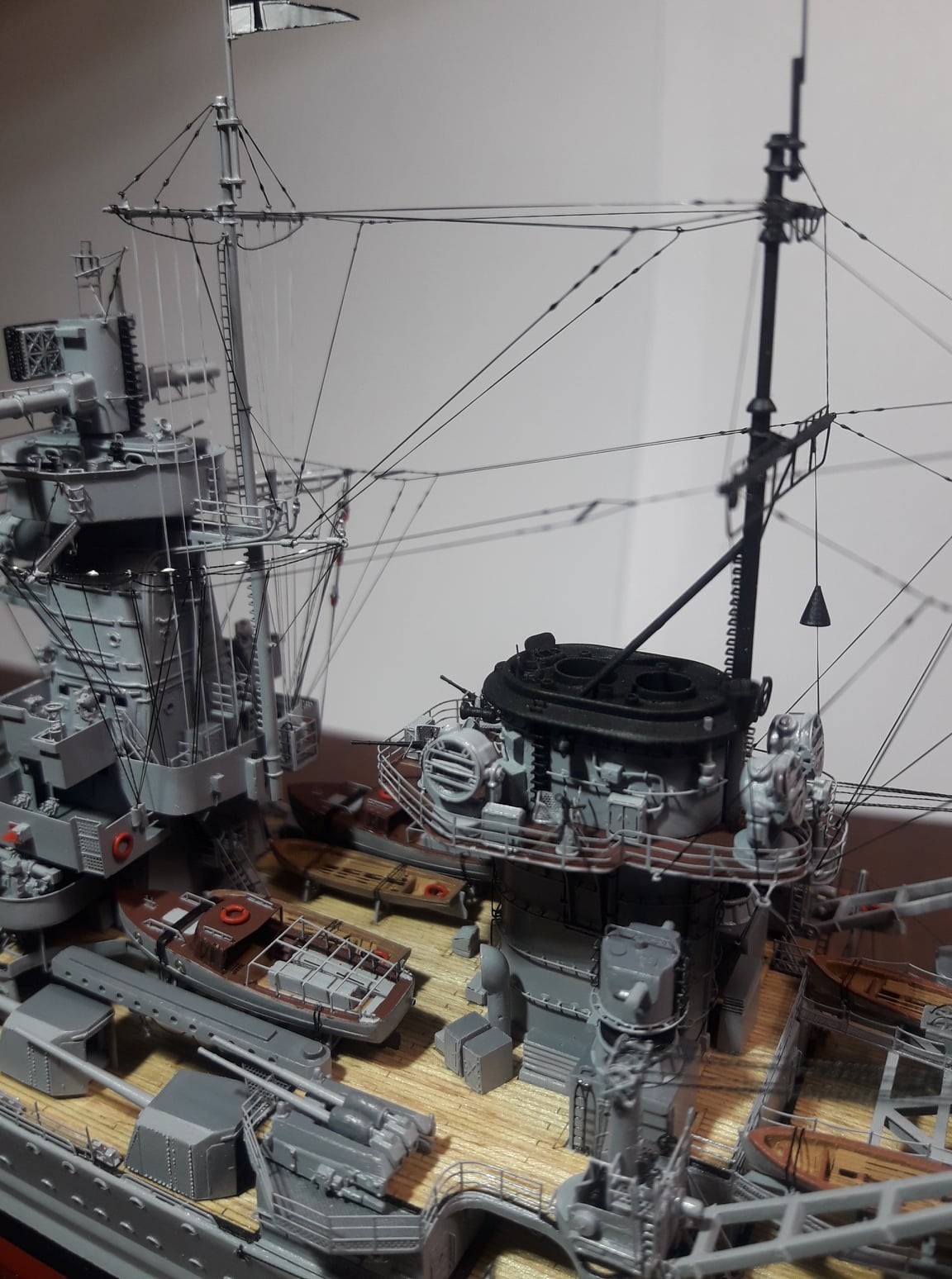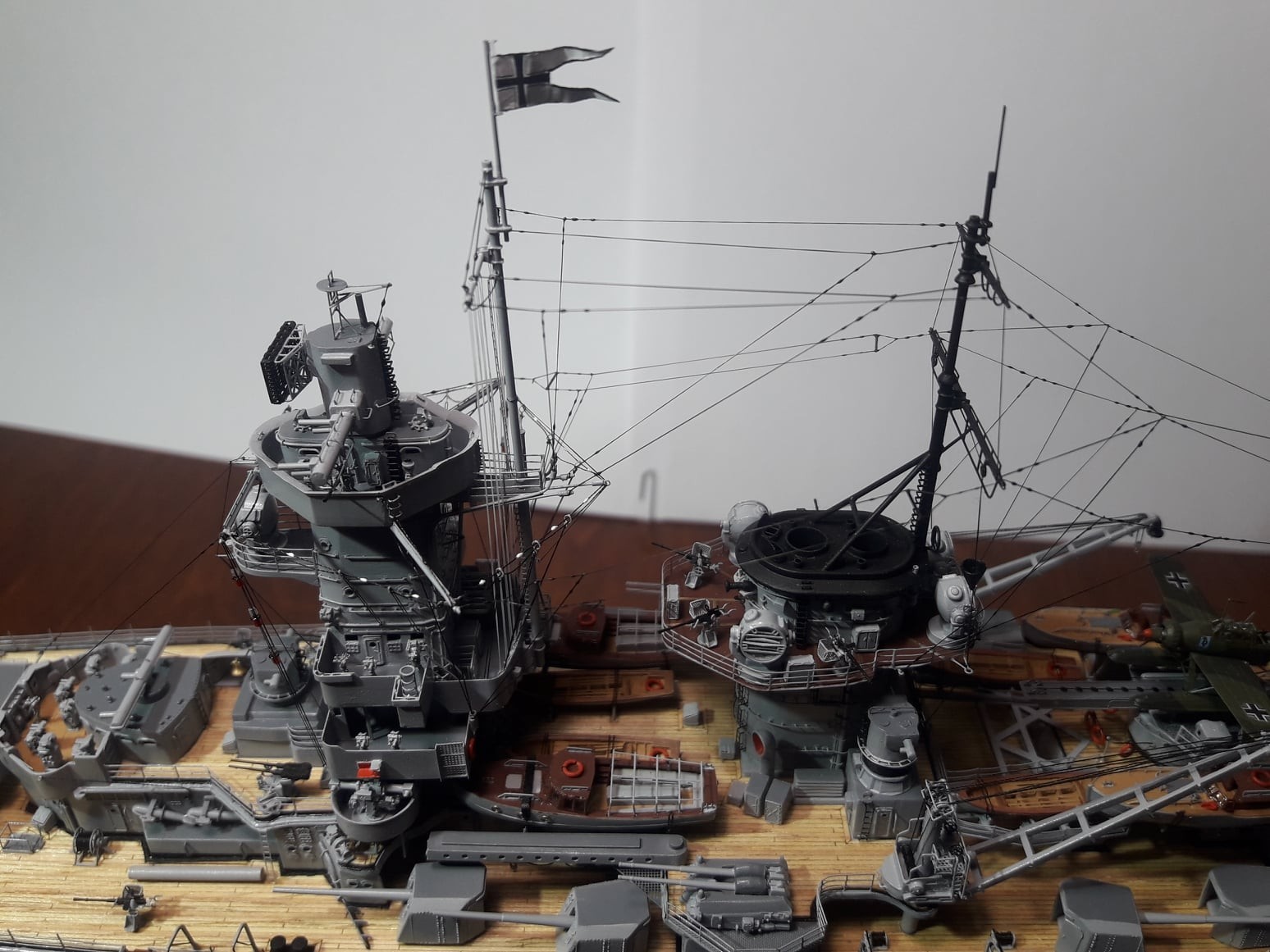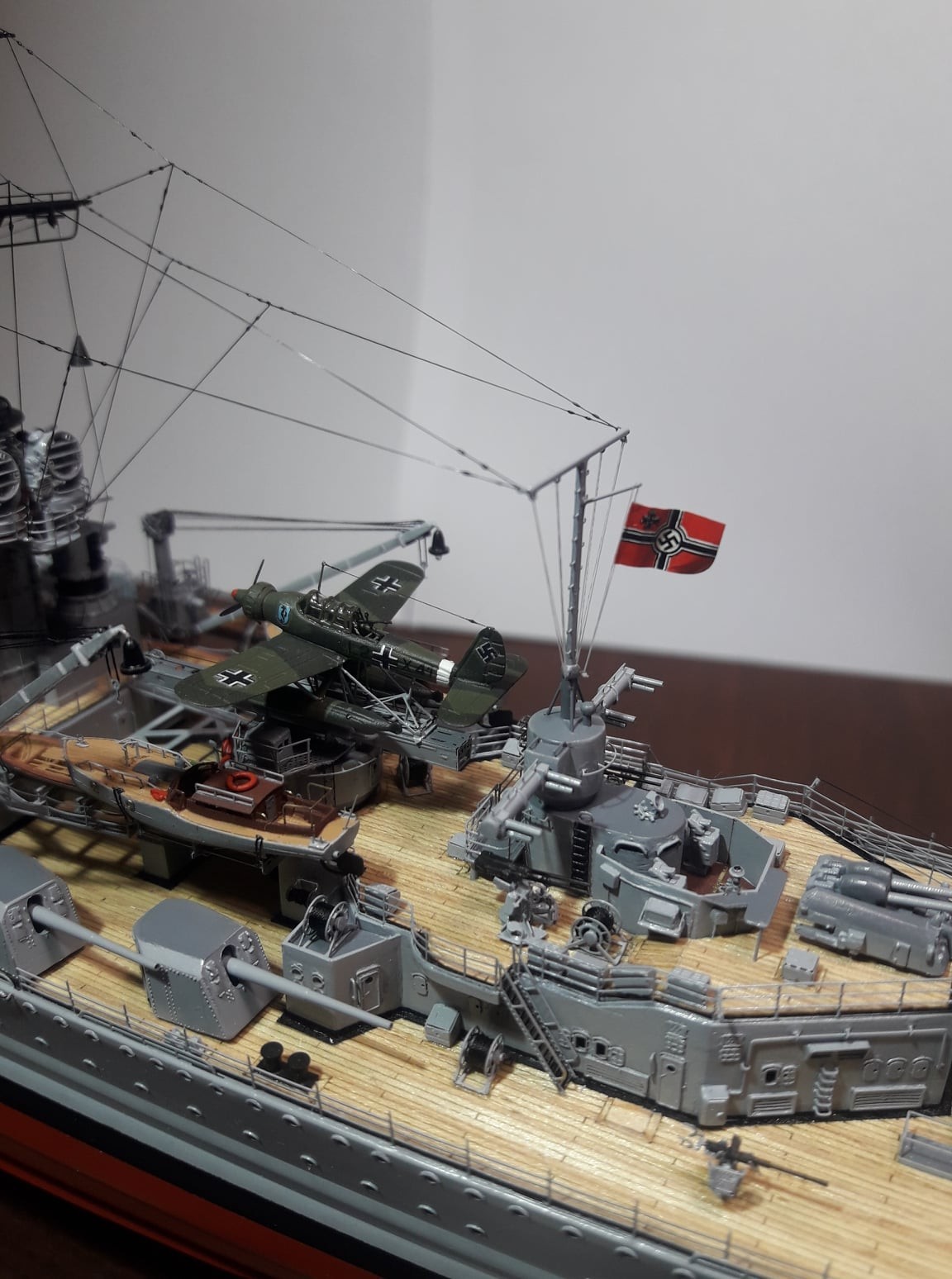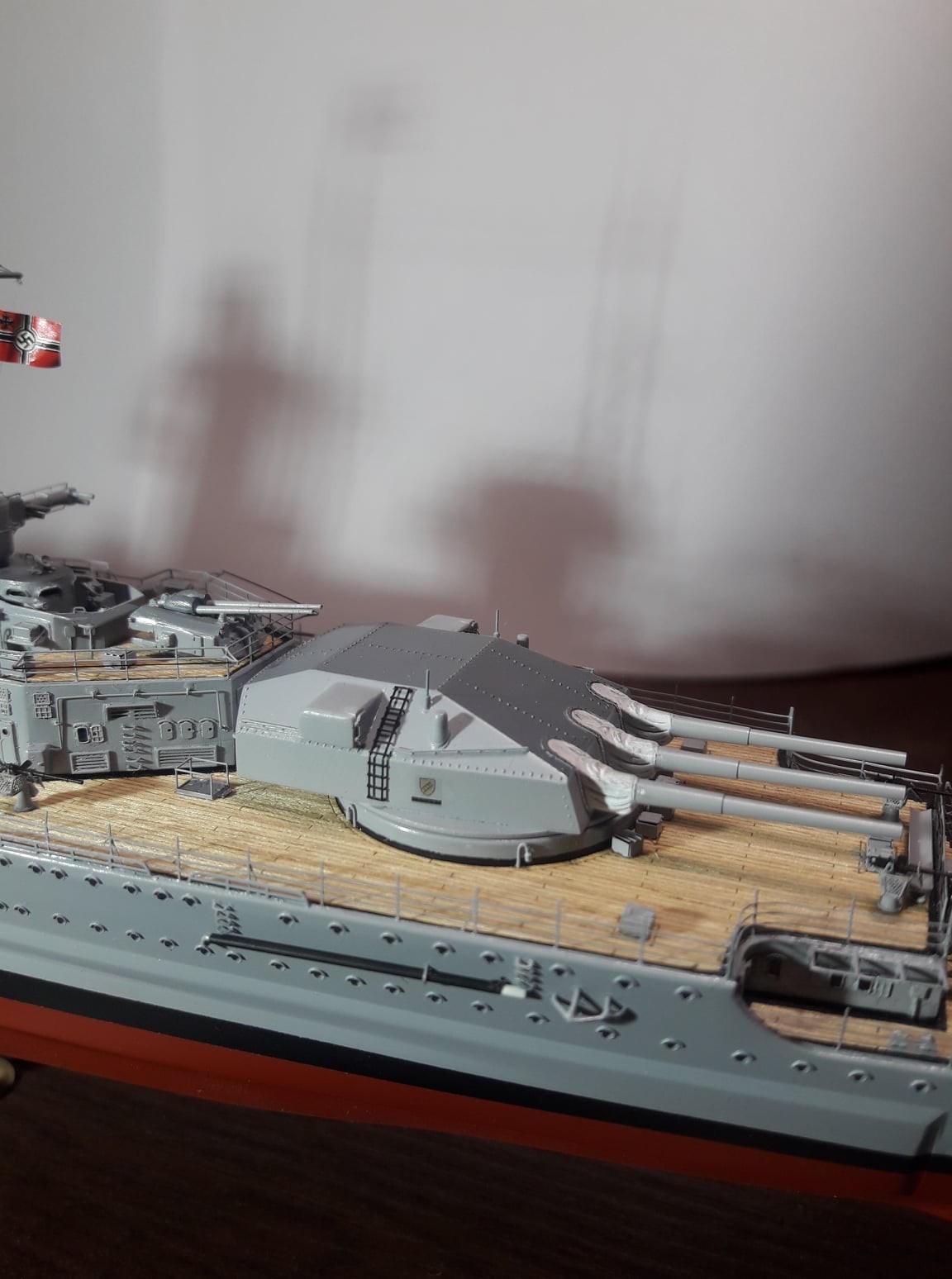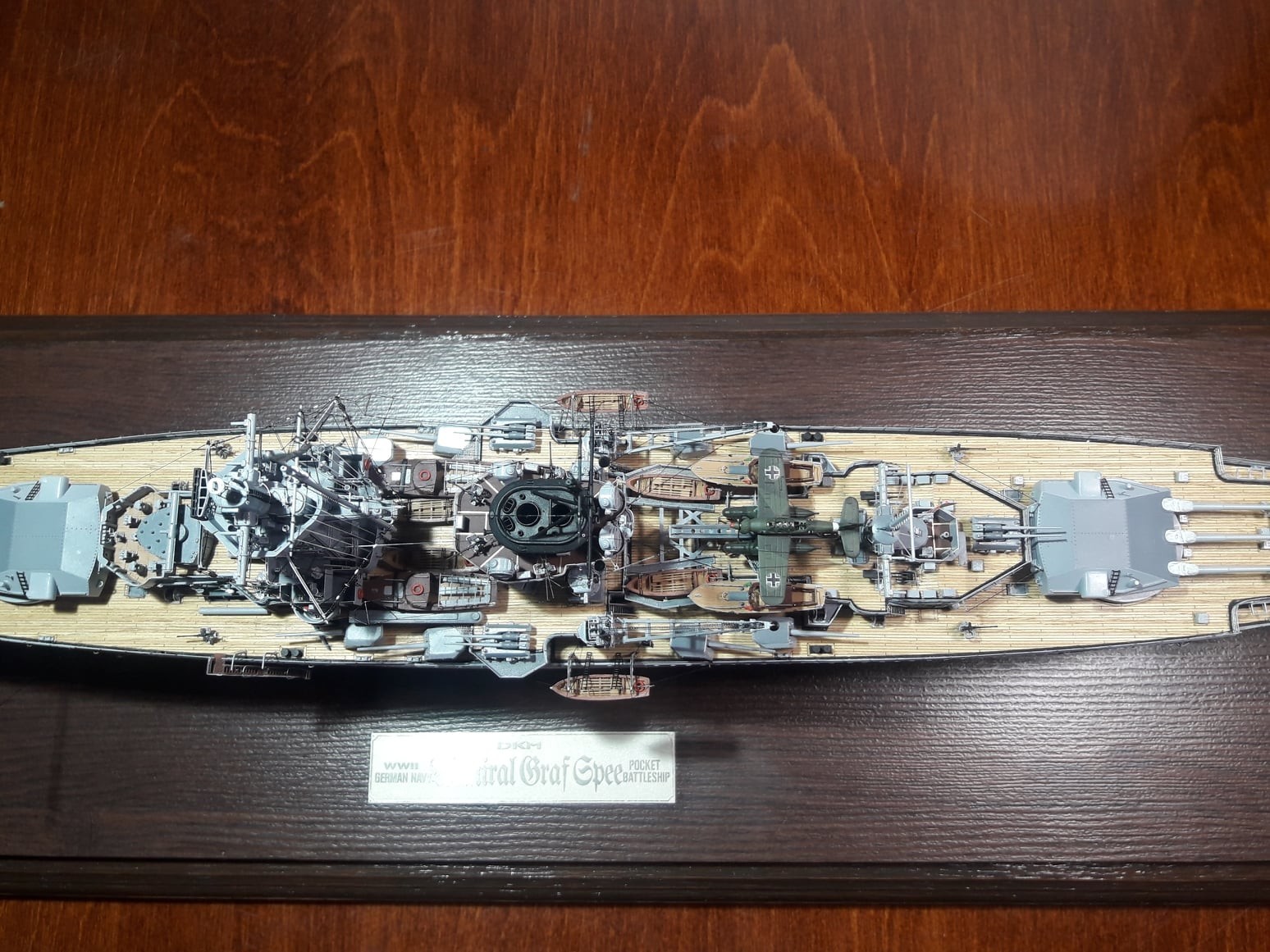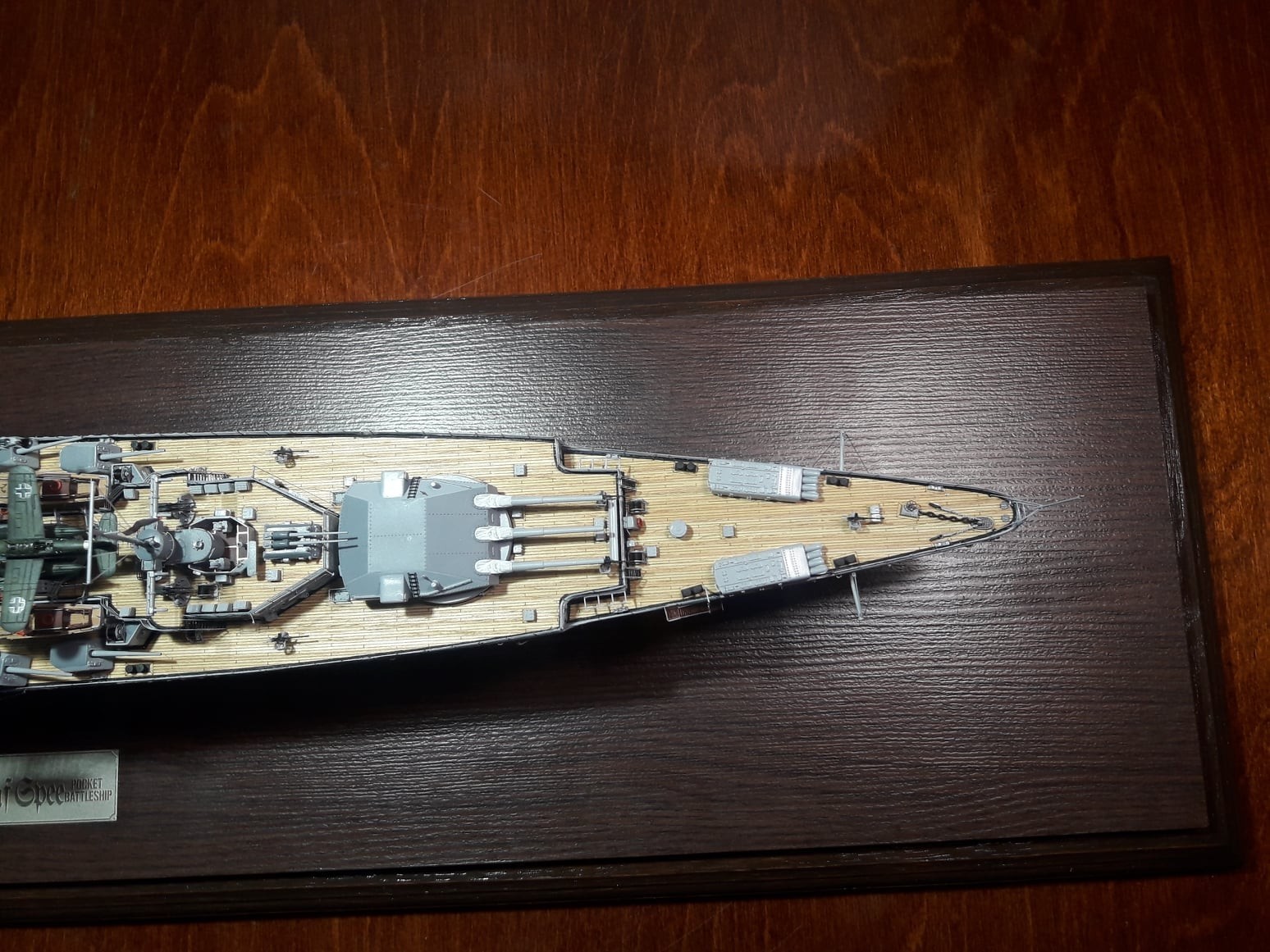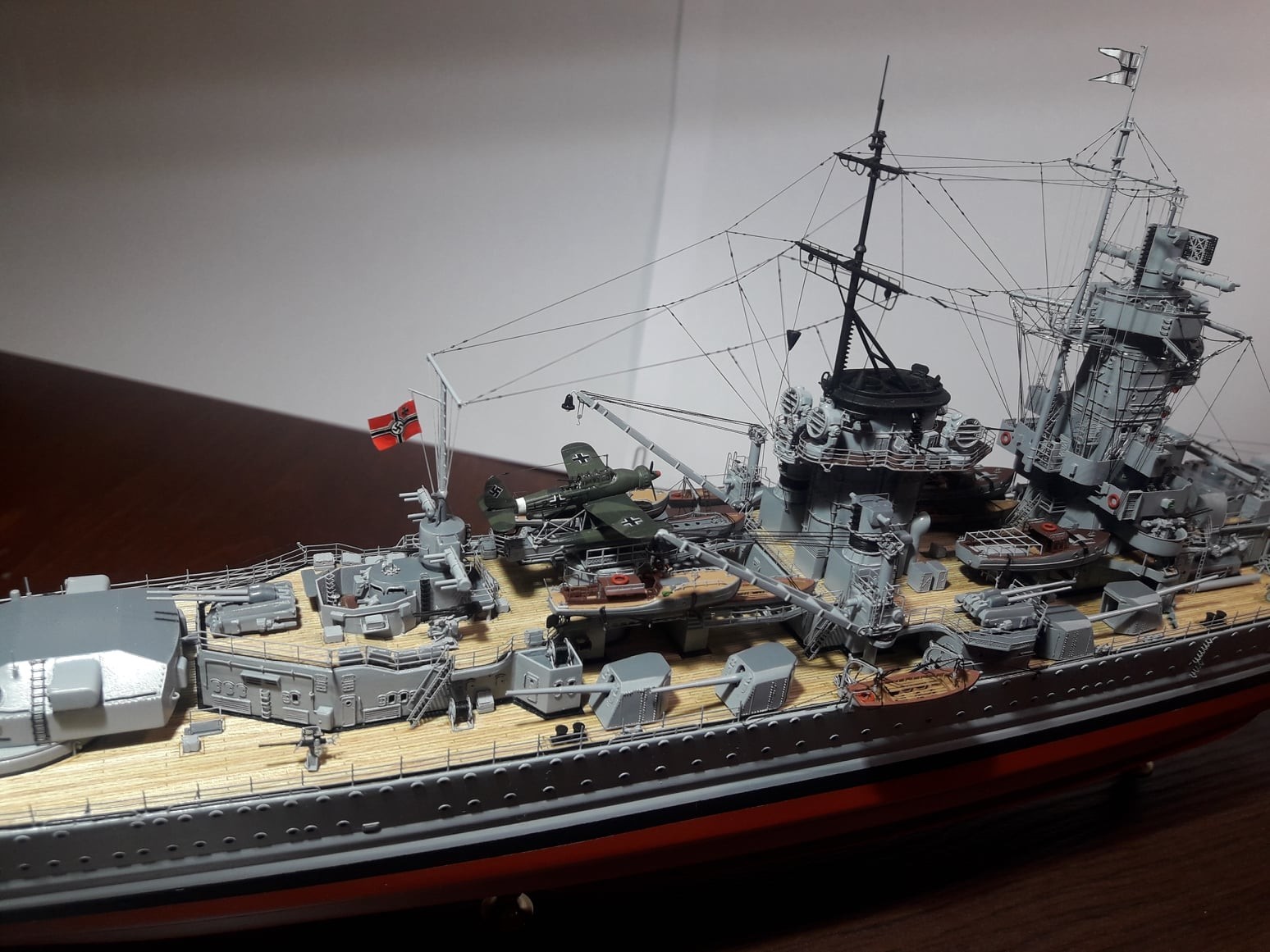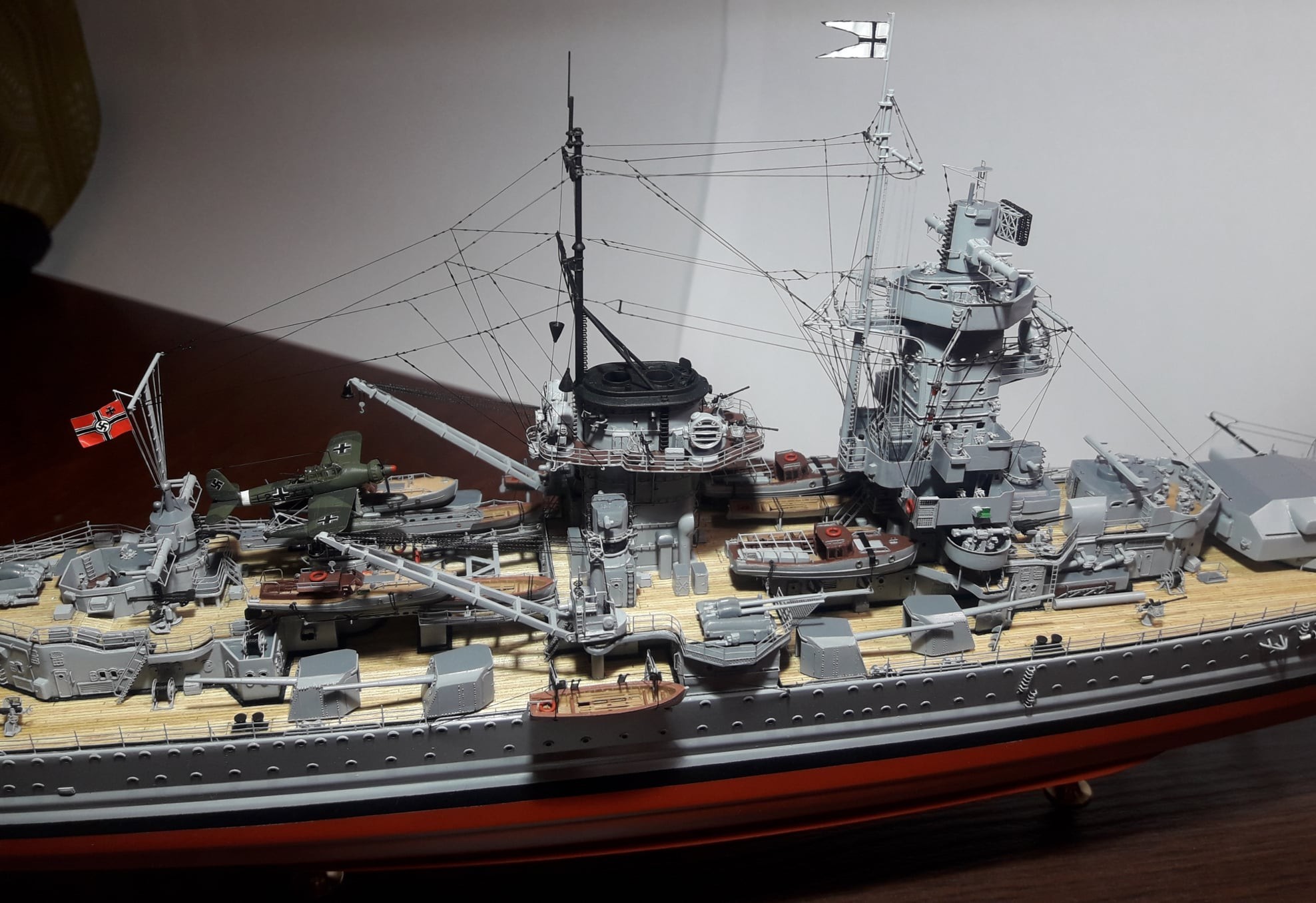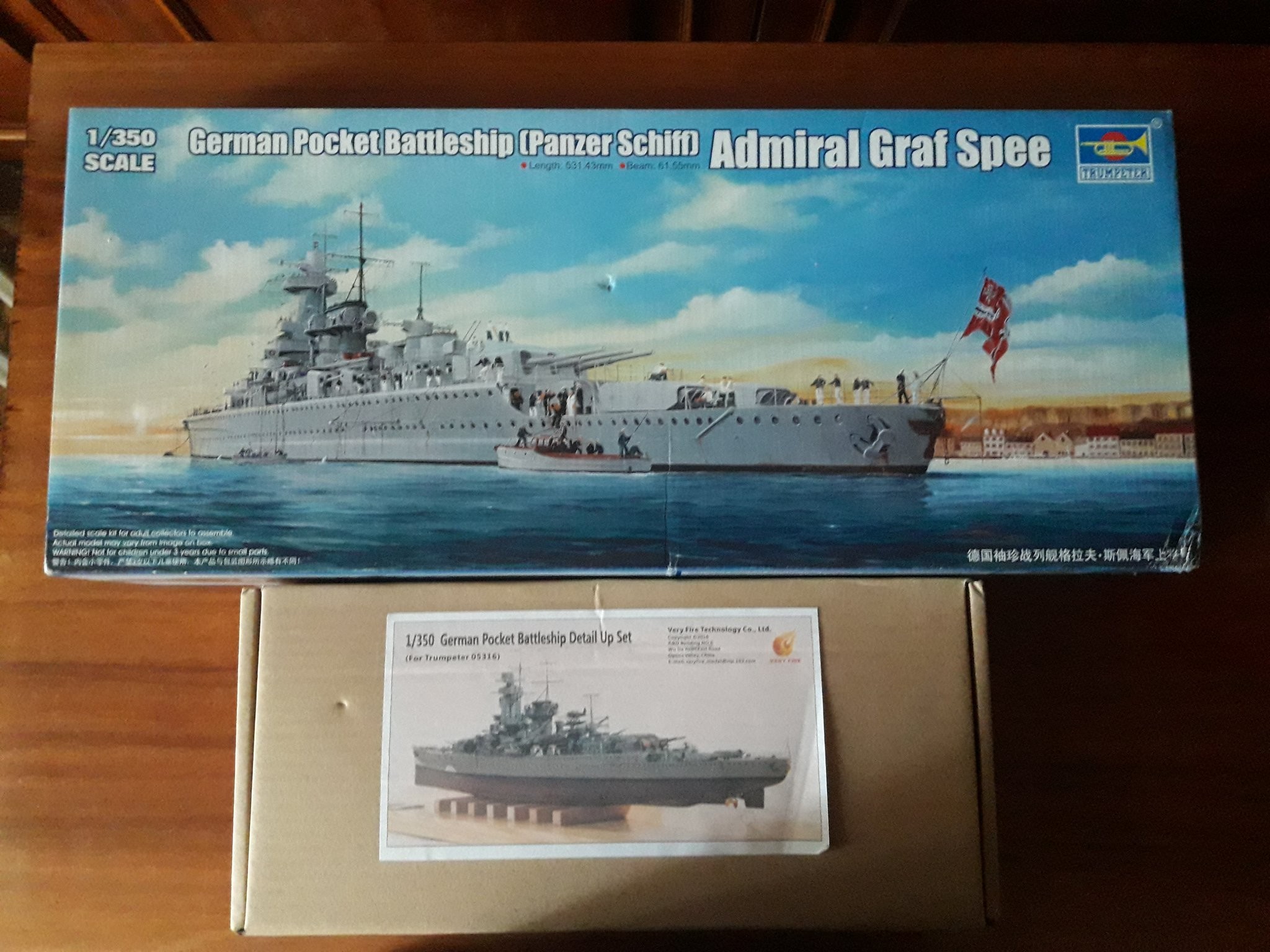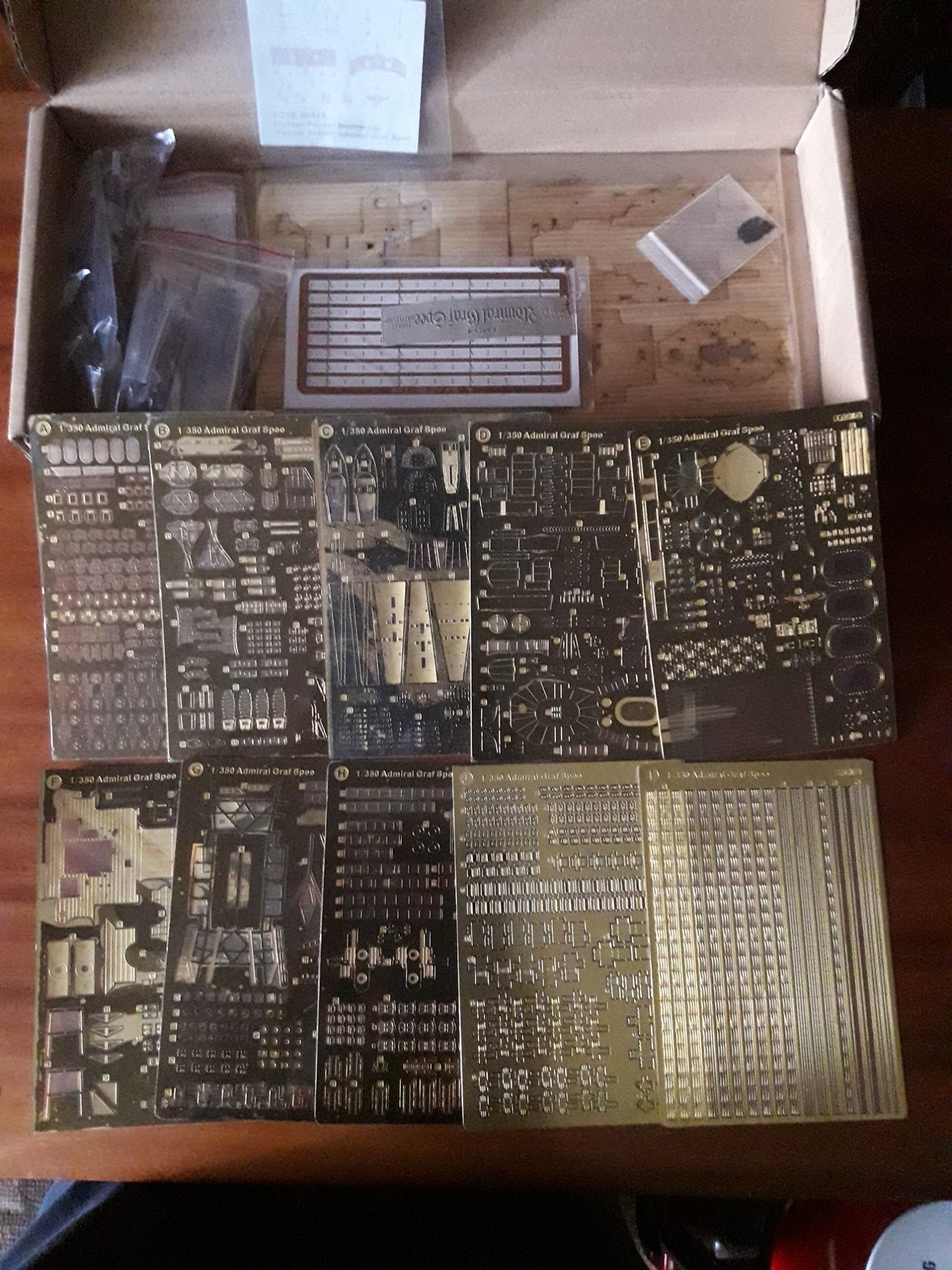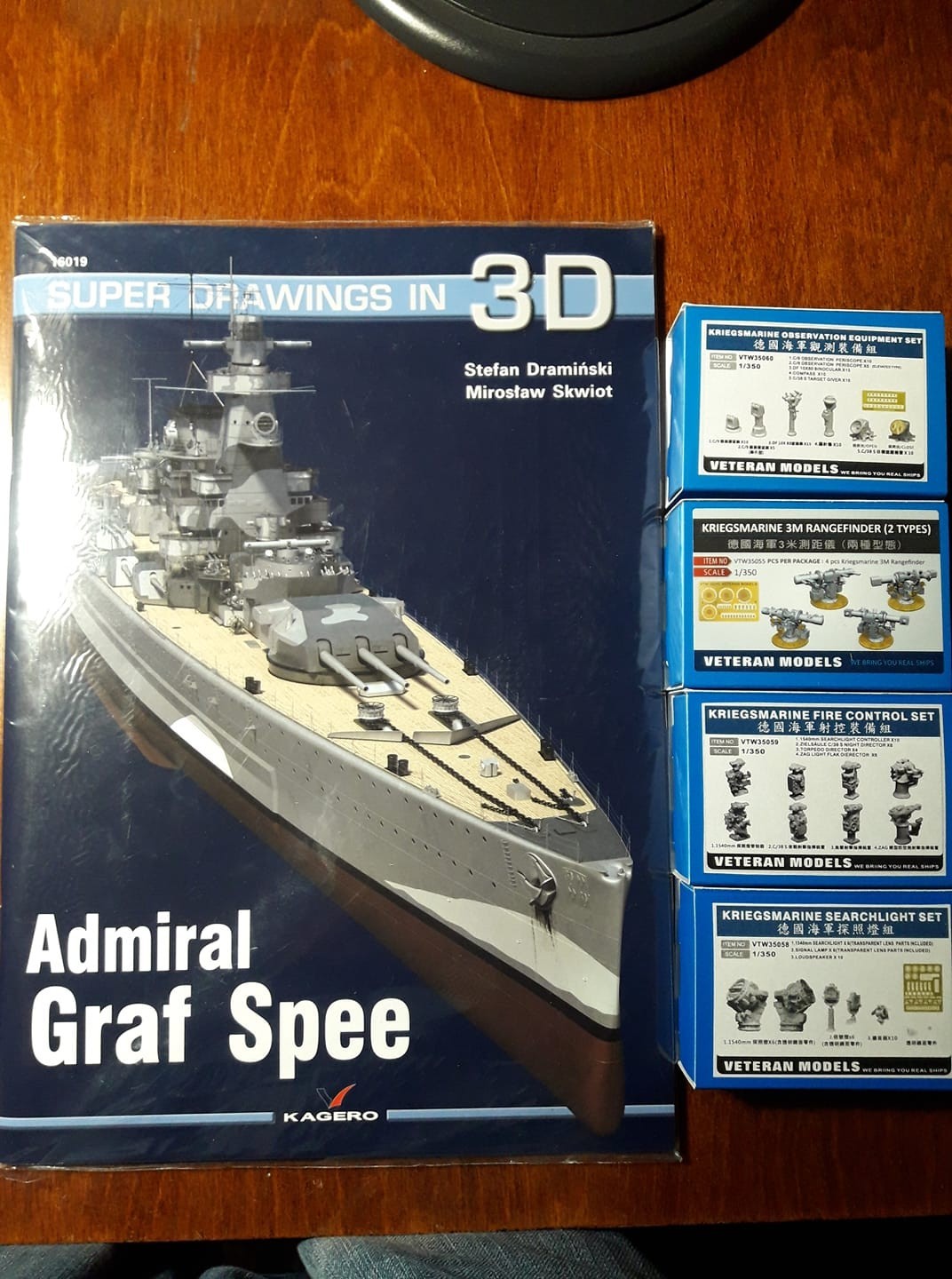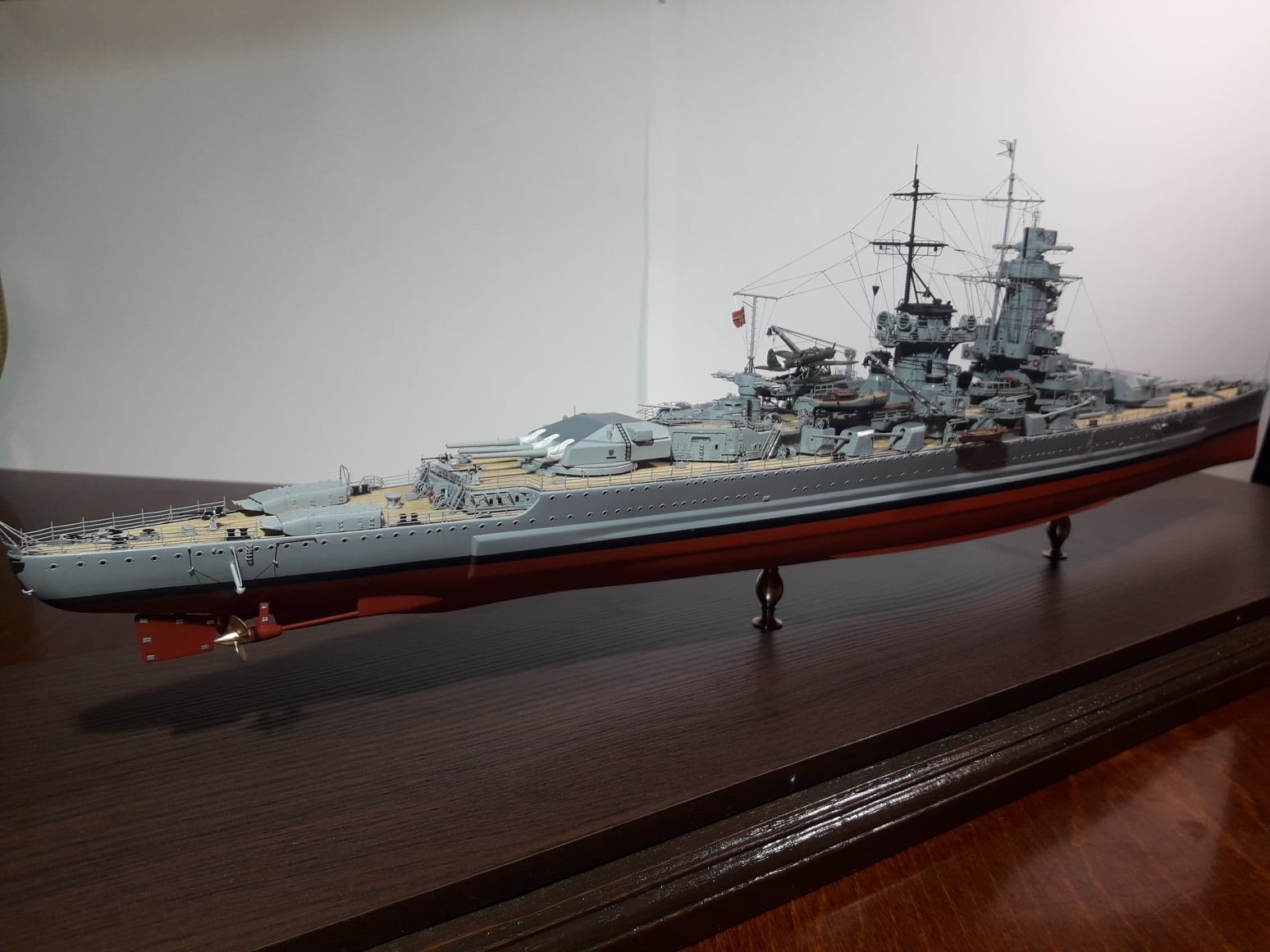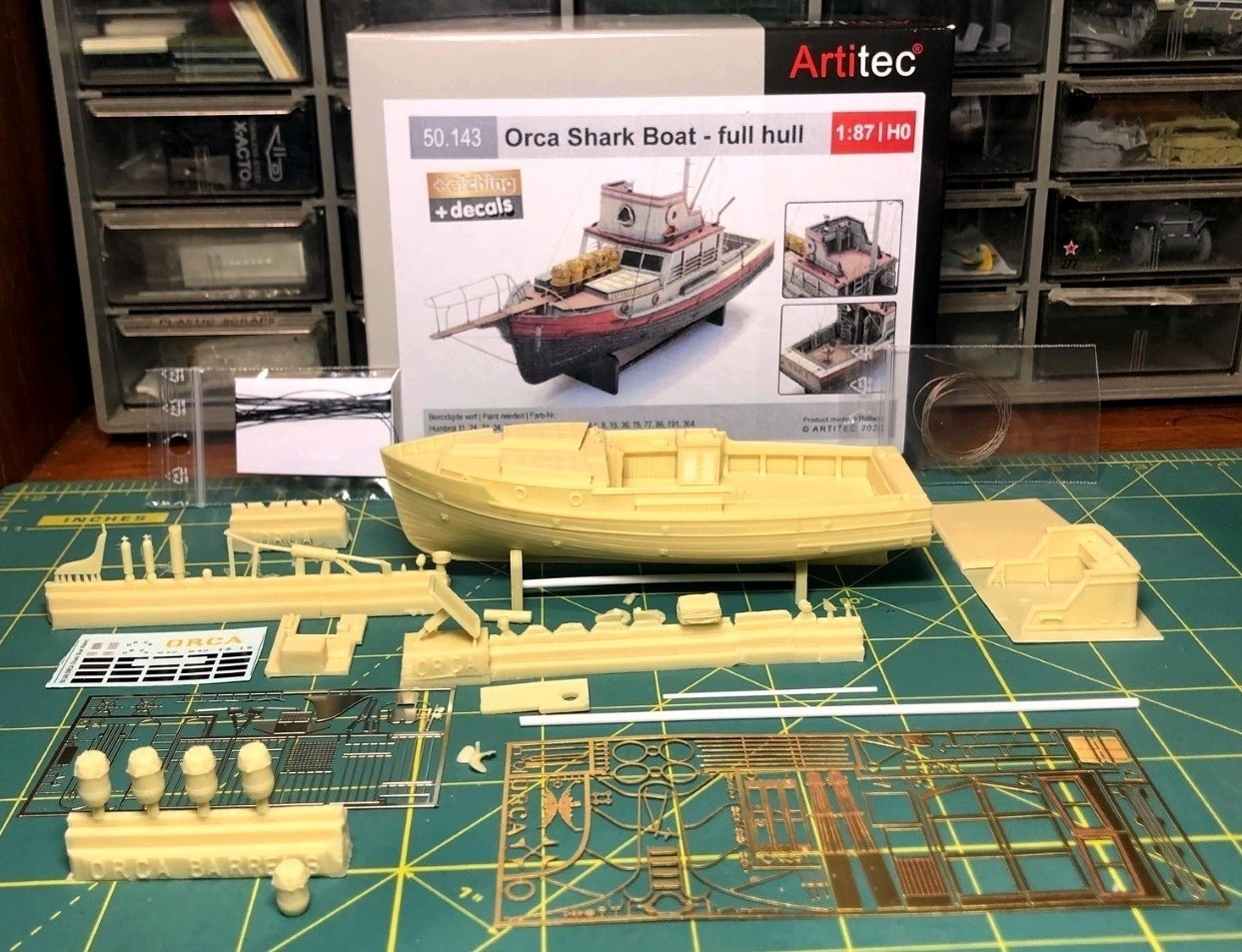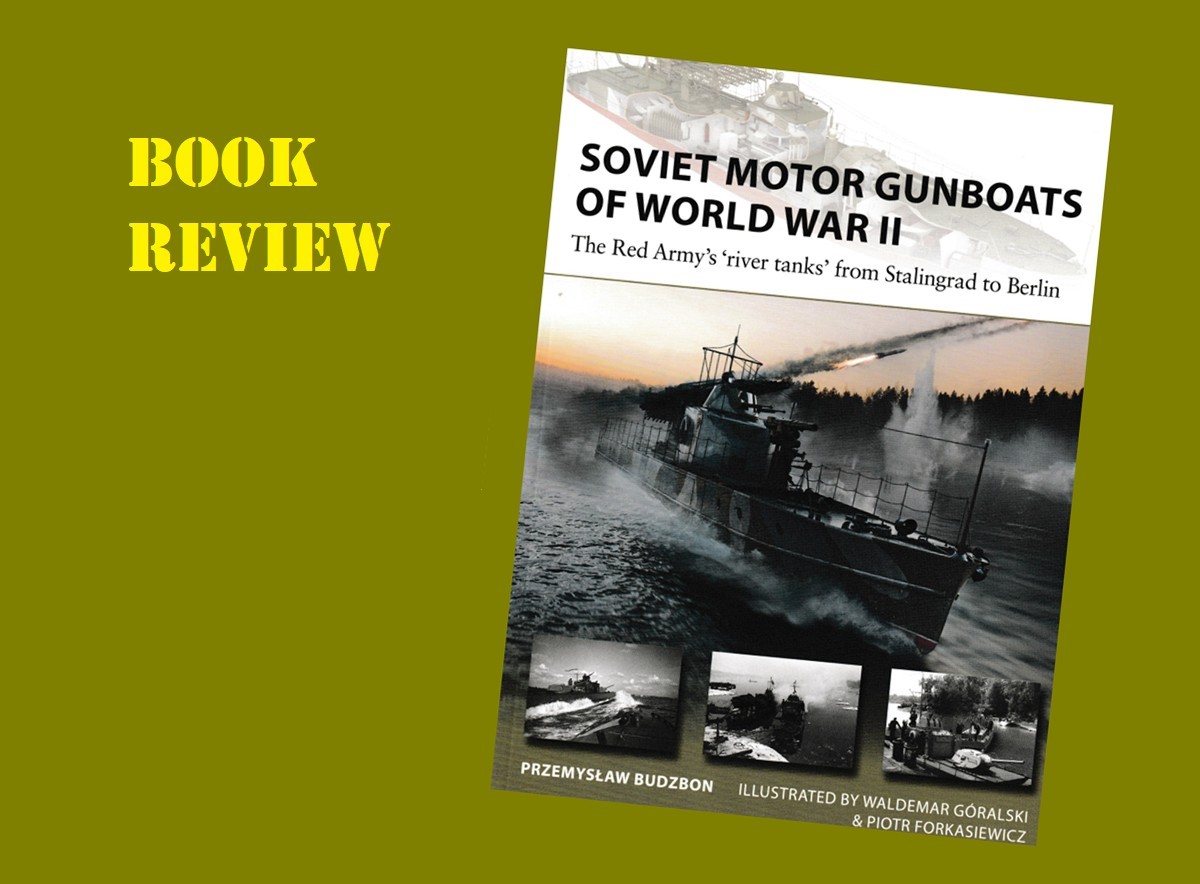A fantastic build of the Kriegsmarine Pocket Battleship The Admiral Graf Spee by modelling friend Andrey Bulatsen an award winning build with plenty of Aftermarket added to it.
Admiral Graf Spee a Deutschland-class "Panzerschiff" (armored ship), nicknamed a "pocket battleship" by the British, which served with the Kriegsmarine of Nazi Germany during World War II. The vessel was named after World War I Admiral Maximilian von Spee, commander of the East Asia Squadron who fought the battles of Coronel and the Falkland Islands, where he was killed in action.
After joining the fleet, Admiral Graf Spee became the flagship of the German Navy. In the summer of 1936, following the outbreak of the Spanish Civil War, she deployed to the Atlantic to participate in non-intervention patrols off the Republican-held coast of Spain. Between August 1936 and May 1937, the ship conducted three patrols off Spain. On the return voyage from Spain, Admiral Graf Spee, stopped in Great Britain to represent Germany in the Coronation Review at Spithead for King George VI on 20 May.
Following the outbreak of war between Germany and the Allies in September 1939, Adolf Hitler ordered the German Navy to begin commerce raiding against Allied merchant traffic. Hitler nevertheless delayed issuing the order until it became clear that Britain would not countenance a peace treaty following the conquest of Poland.
At 05:30 on the morning of 13 December 1939, lookouts spotted a pair of masts off the ship's starboard bow. Langsdorff assumed this to be the escort for a convoy mentioned in the documents recovered from Tairoa. At 05:52, however, the ship was identified as HMS Exeter; she was accompanied by a pair of smaller warships, initially thought to be destroyers but quickly identified as Leander-class cruisers. Langsdorff decided not to flee from the British ships, and ordered his ship to battle stations and to close at maximum speed. At 06:08, the British spotted Admiral Graf Spee; Harwood divided his ships to split the gunfire of Admiral Graf Spee's 28 cm guns. The German ship opened fire with her main battery at Exeter and her secondary guns at the flagship Ajax at 06:17. At 06:20, Exeter returned fire, followed by Ajax at 06:21 and Achilles at 06:24. In the span of thirty minutes, Admiral Graf Spee had hit Exeter three times, disabling her two forward turrets, destroying her bridge and her aircraft catapult, and starting major fires. Ajax and Achilles moved closer to Admiral Graf Spee to relieve the pressure on Exeter.
Langsdorff thought the two light cruisers were making a torpedo attack, and turned away under a smokescreen. The respite allowed Exeter to withdraw from the action; by now, only one of her gun turrets was still in action, and she had suffered 61 dead and 23 wounded crew members. At around 07:00, Exeter returned to the engagement, firing from her stern turret. Admiral Graf Spee fired on her again, scored more hits, and forced Exeter to withdraw again, this time with a list to port. At 07:25, Admiral Graf Spee scored a hit on Ajax that disabled her aft turrets. Both sides broke off the action, Admiral Graf Spee retreating into the River Plate estuary, while Harwood's battered cruisers remained outside to observe any possible breakout attempts. In the course of the engagement, Admiral Graf Spee had been hit approximately 70 times; 36 men were killed and 60 more were wounded, including Langsdorff, who had been wounded twice by splinters while standing on the open bridge.
As a result of battle damage and casualties, Langsdorff decided to put into Montevideo, where repairs could be effected and the wounded men could be evacuated from the ship. Most of the hits scored by the British cruisers caused only minor structural and superficial damage but the oil purification plant, which was required to prepare the diesel fuel for the engines, was destroyed. Her desalination plant and galley were also destroyed, which would have increased the difficulty of a return to Germany. A hit in the bow would also have negatively affected her seaworthiness in the heavy seas of the North Atlantic. Admiral Graf Spee had fired much of her ammunition in the engagement with Harwood's cruisers.
After arriving in port, the wounded crewmen were taken to local hospitals and the dead were buried with full military honours. Captive Allied seamen, consisting of 6 captains, 9 chief engineers, 25 officers and 21 seamen.
still aboard the ship were released. Repairs necessary to make the ship seaworthy were expected to take up to two weeks. British naval intelligence worked to convince Langsdorff that vastly superior forces were concentrating to destroy his ship, if he attempted to break out of the harbour. The Admiralty broadcast a series of signals, on frequencies known to be intercepted by German intelligence. The closest heavy units—the carrier Ark Royal and battlecruiser Renown—were some 2,500 nmi (4,600 km; 2,900 mi) away, much too far to intervene in the situation. Believing the British reports, Langsdorff discussed his options with commanders in Berlin. These were either to break out and seek refuge in Buenos Aires, where the Argentine government would intern the ship, or to scuttle the ship in the Plate estuary.
